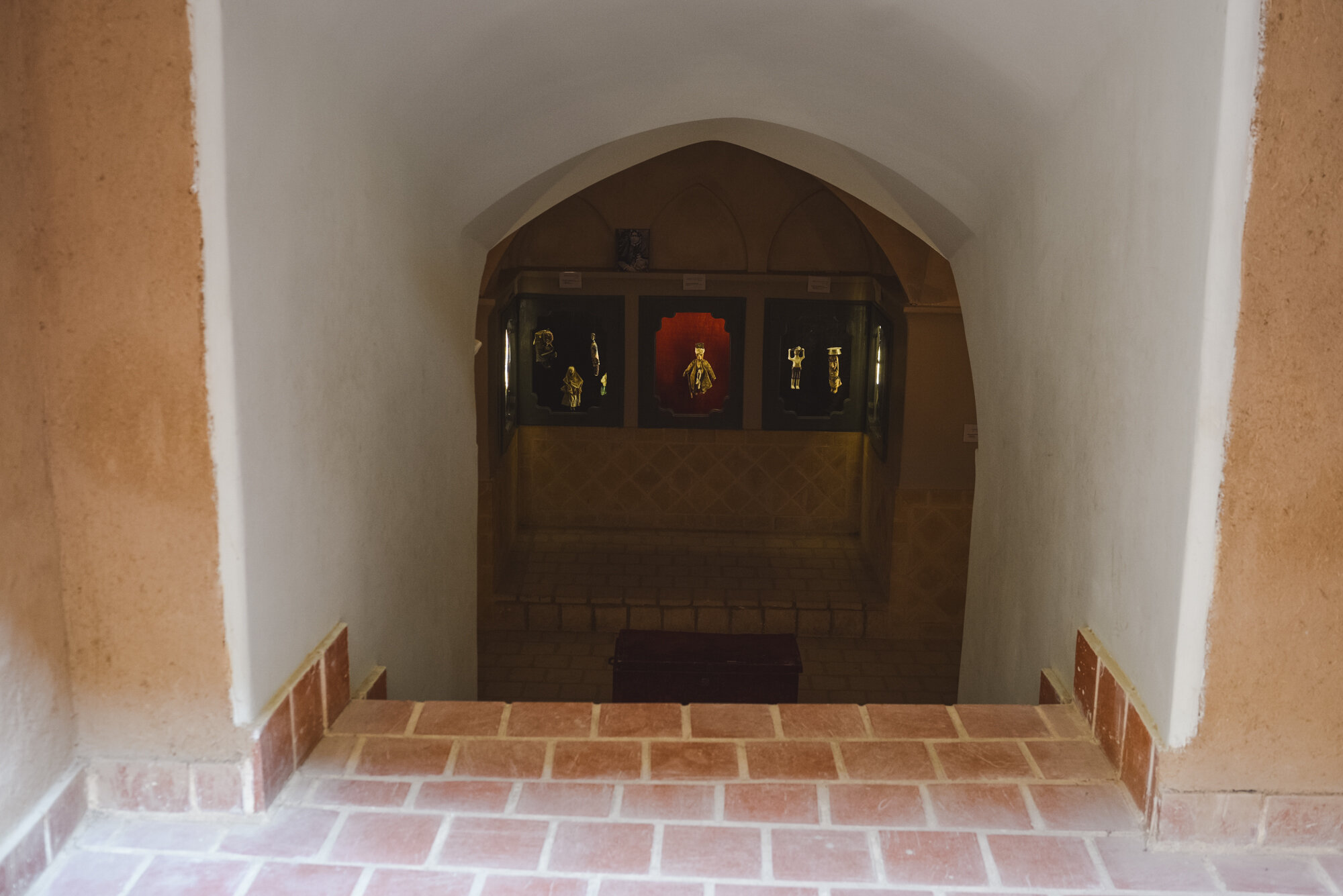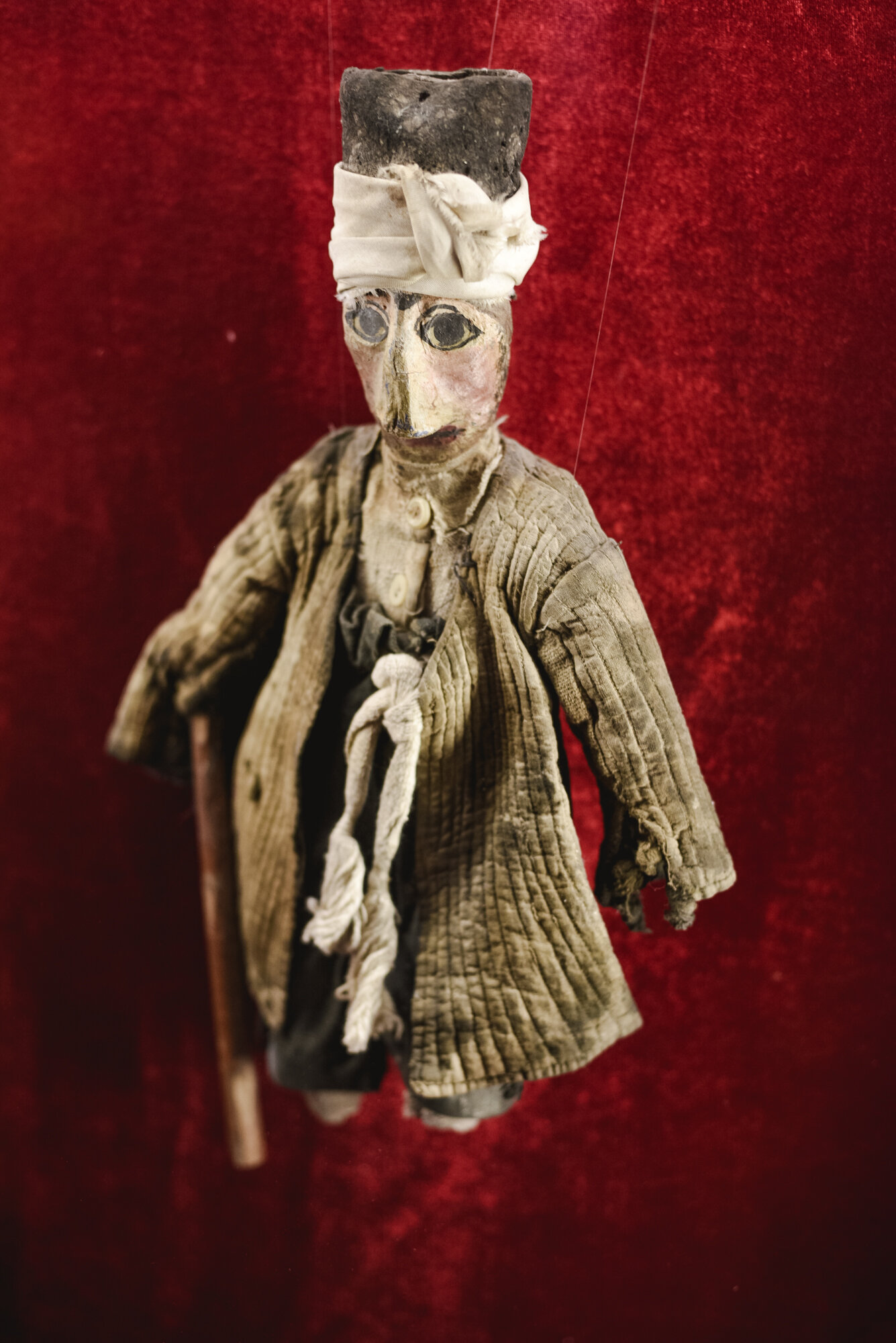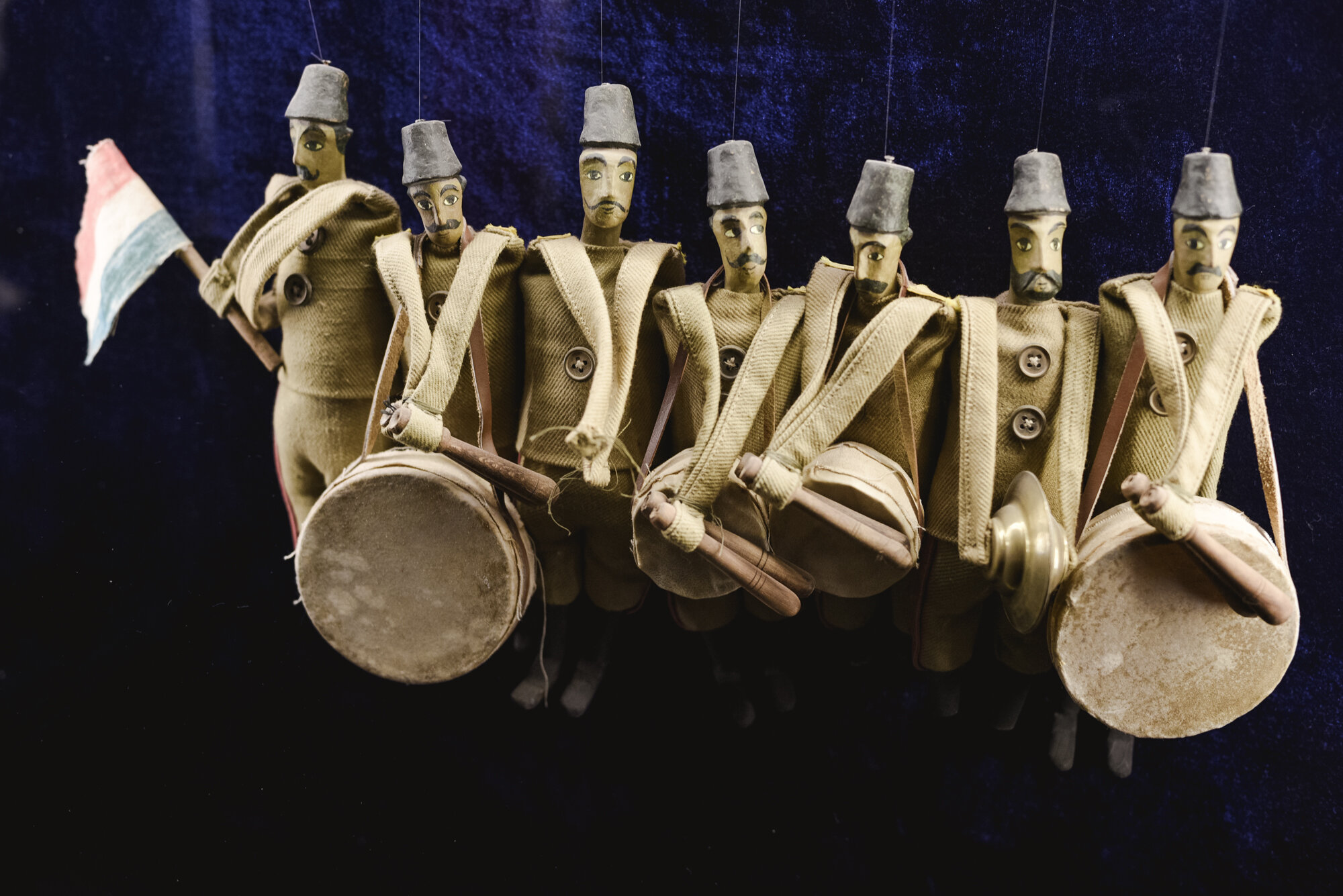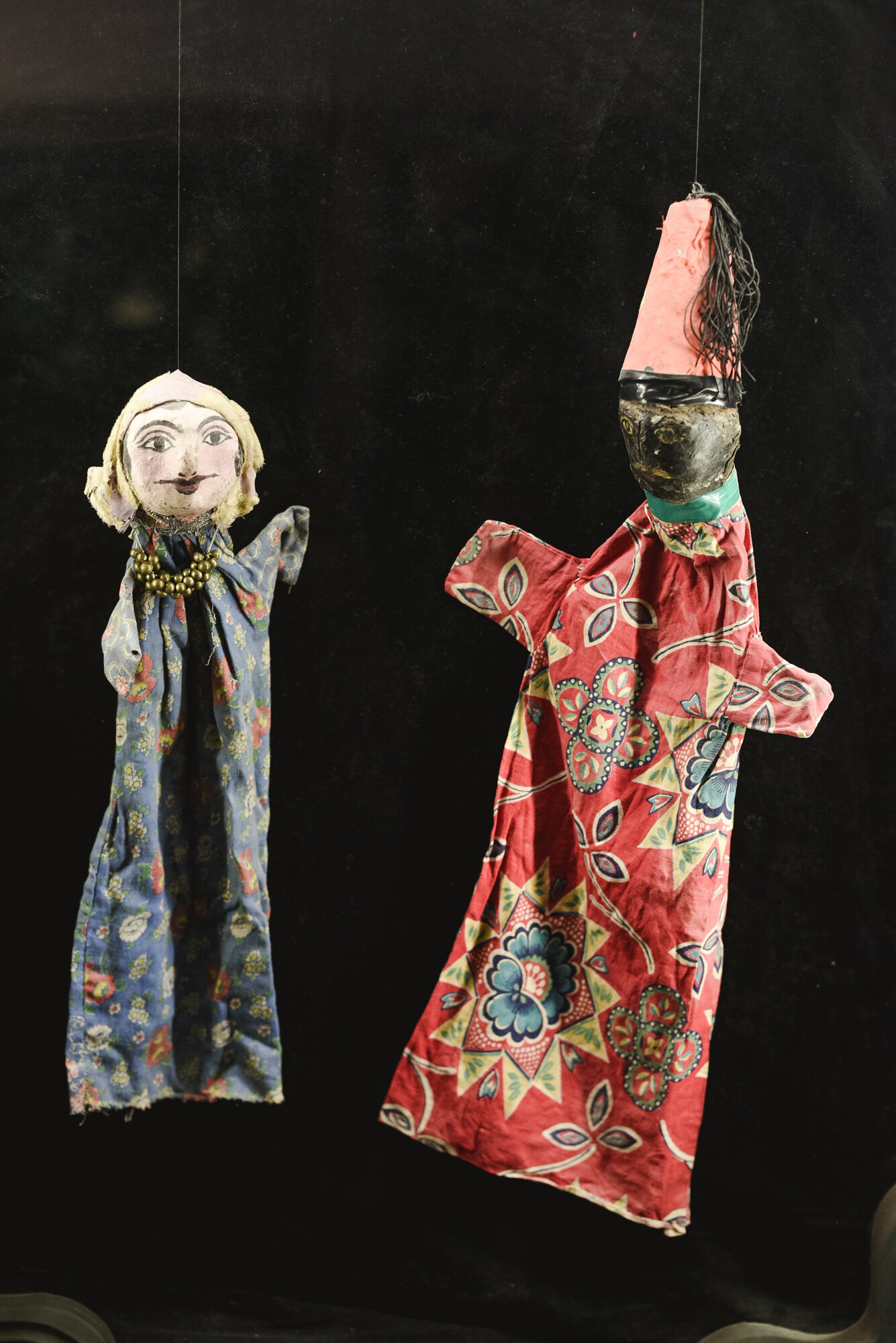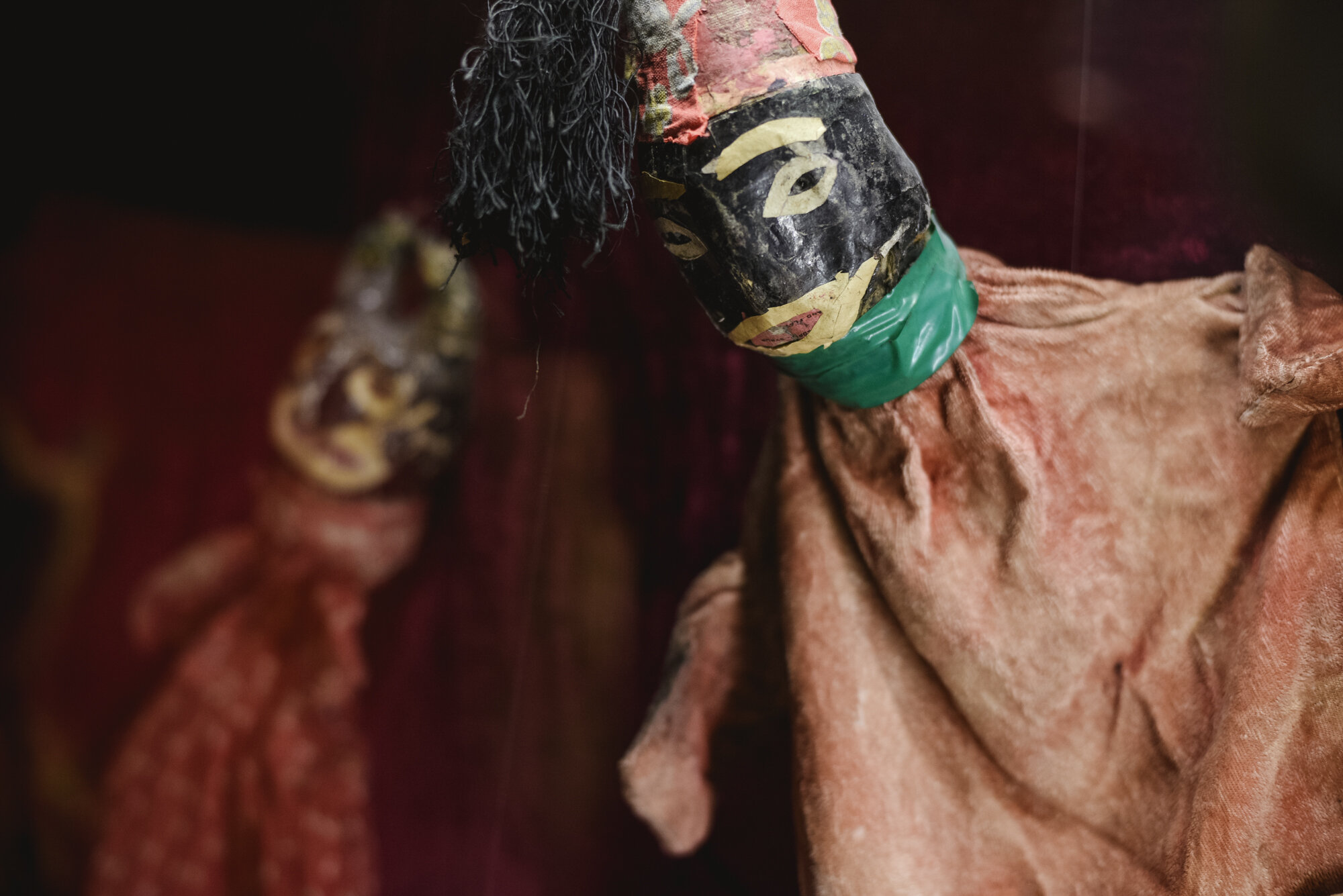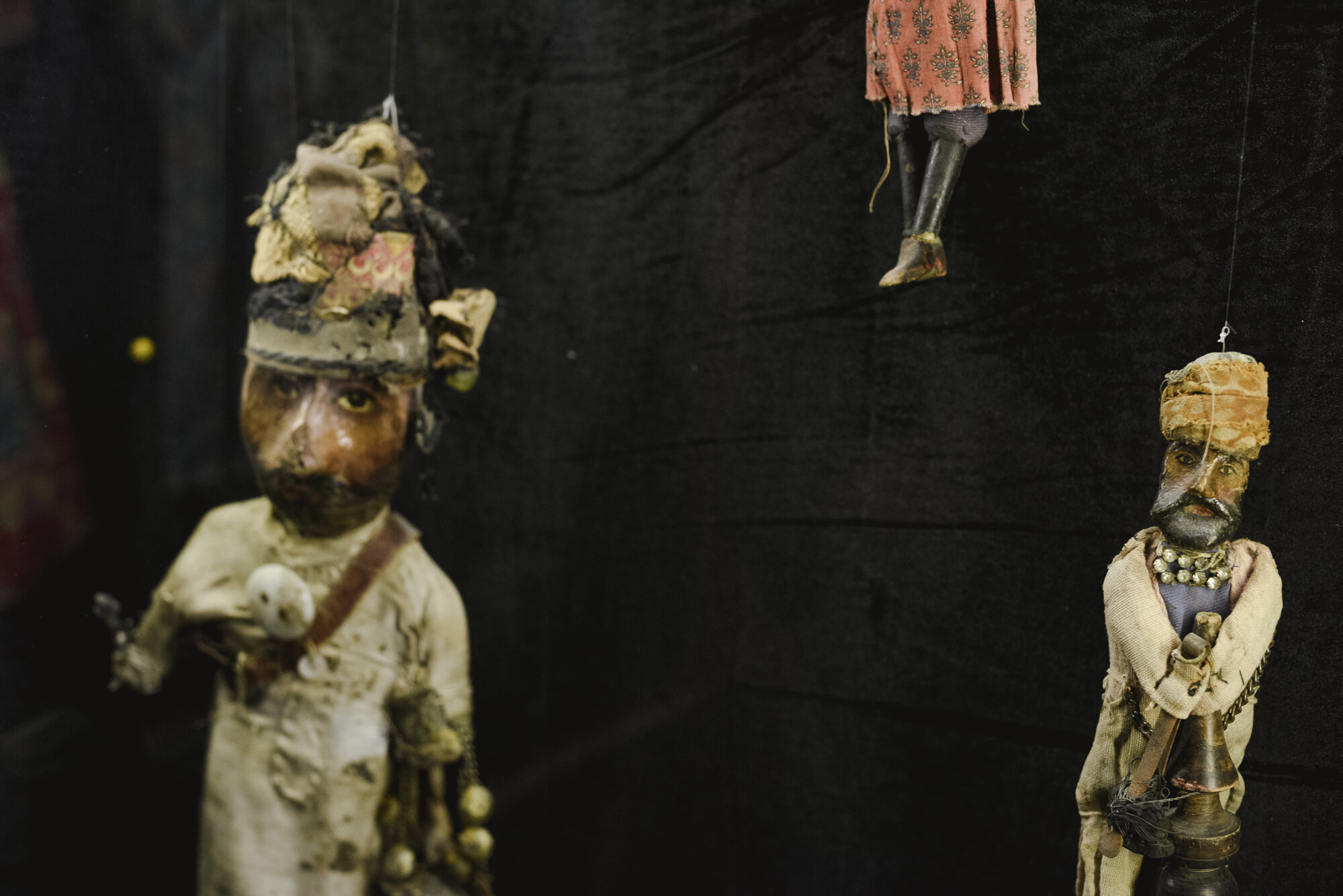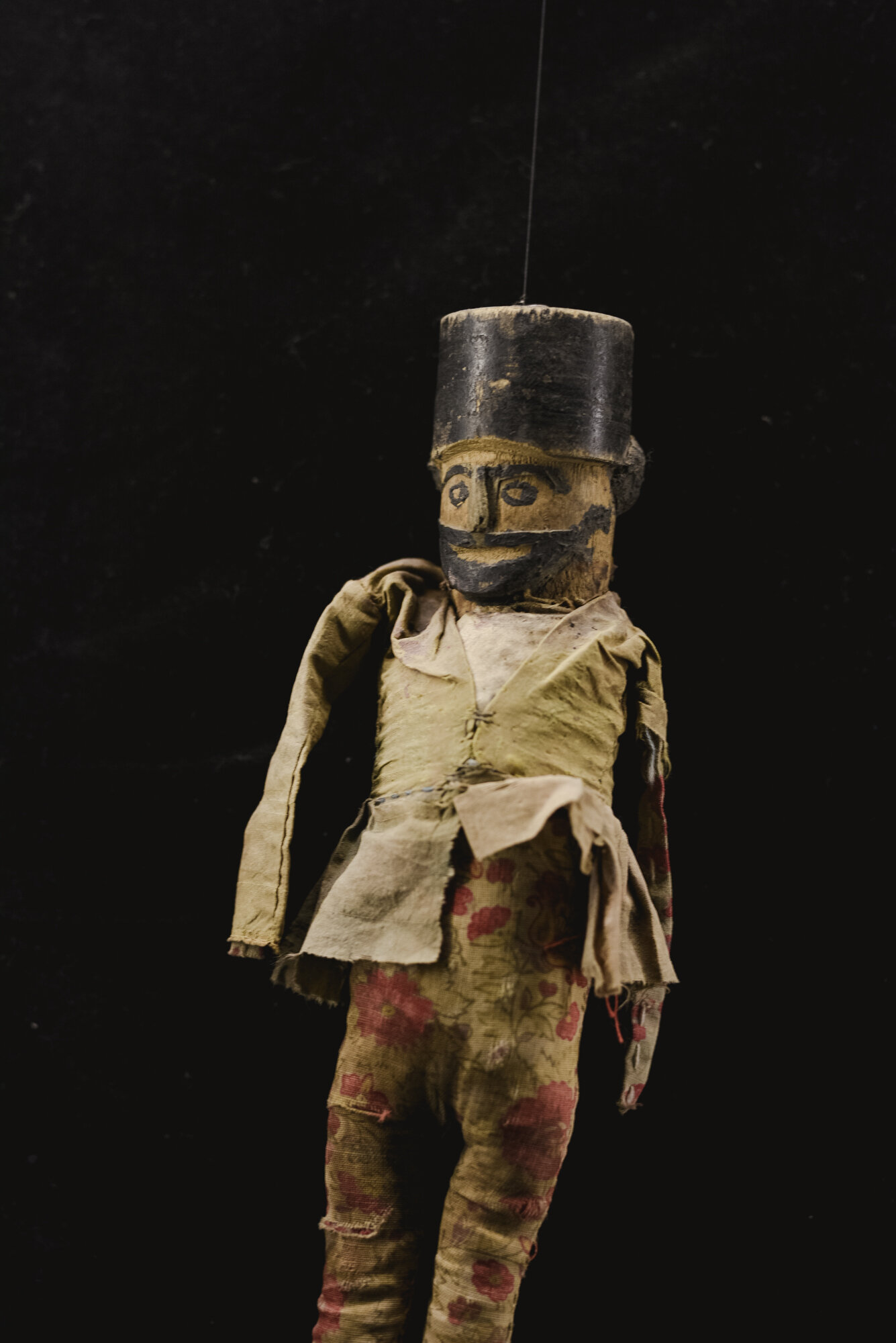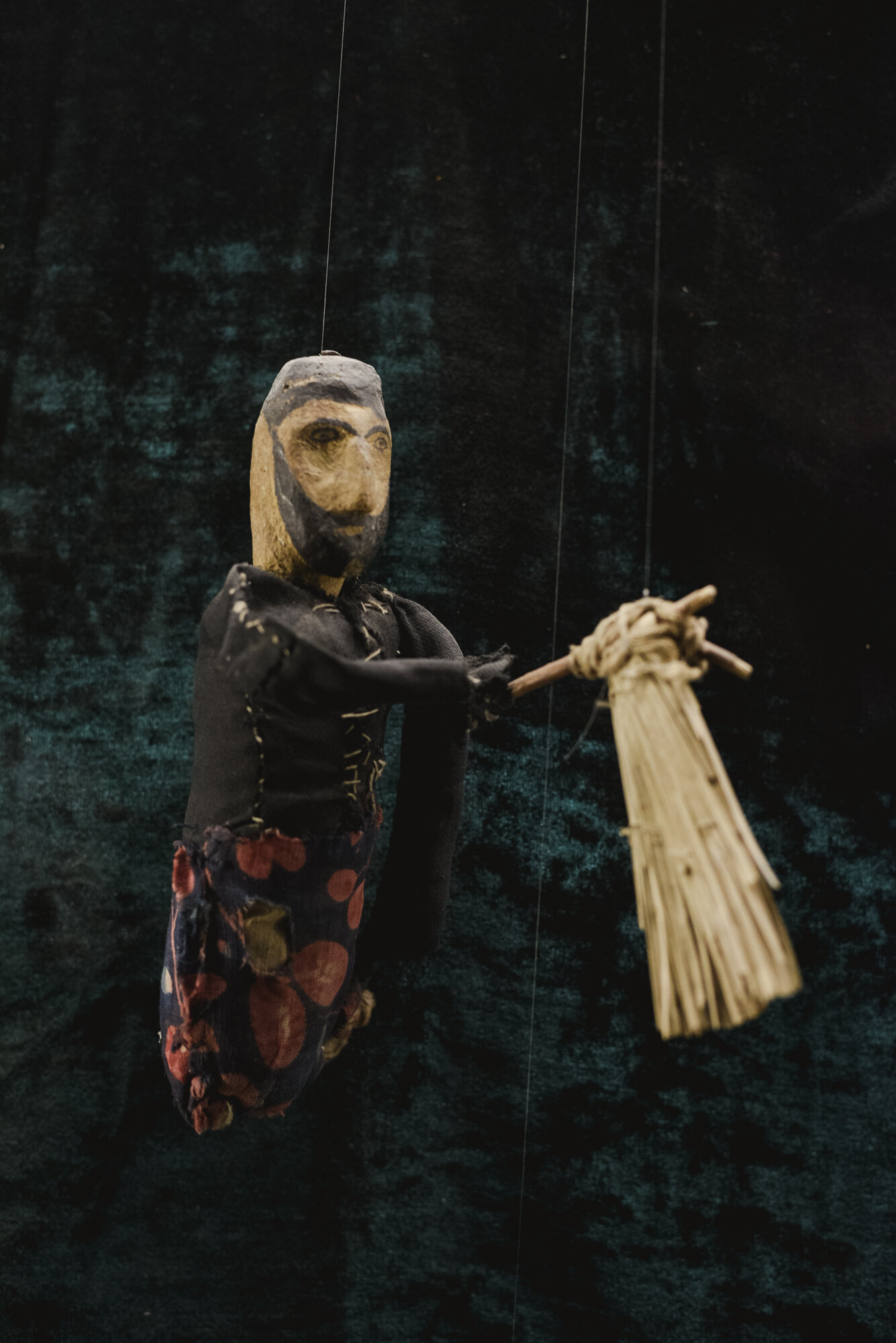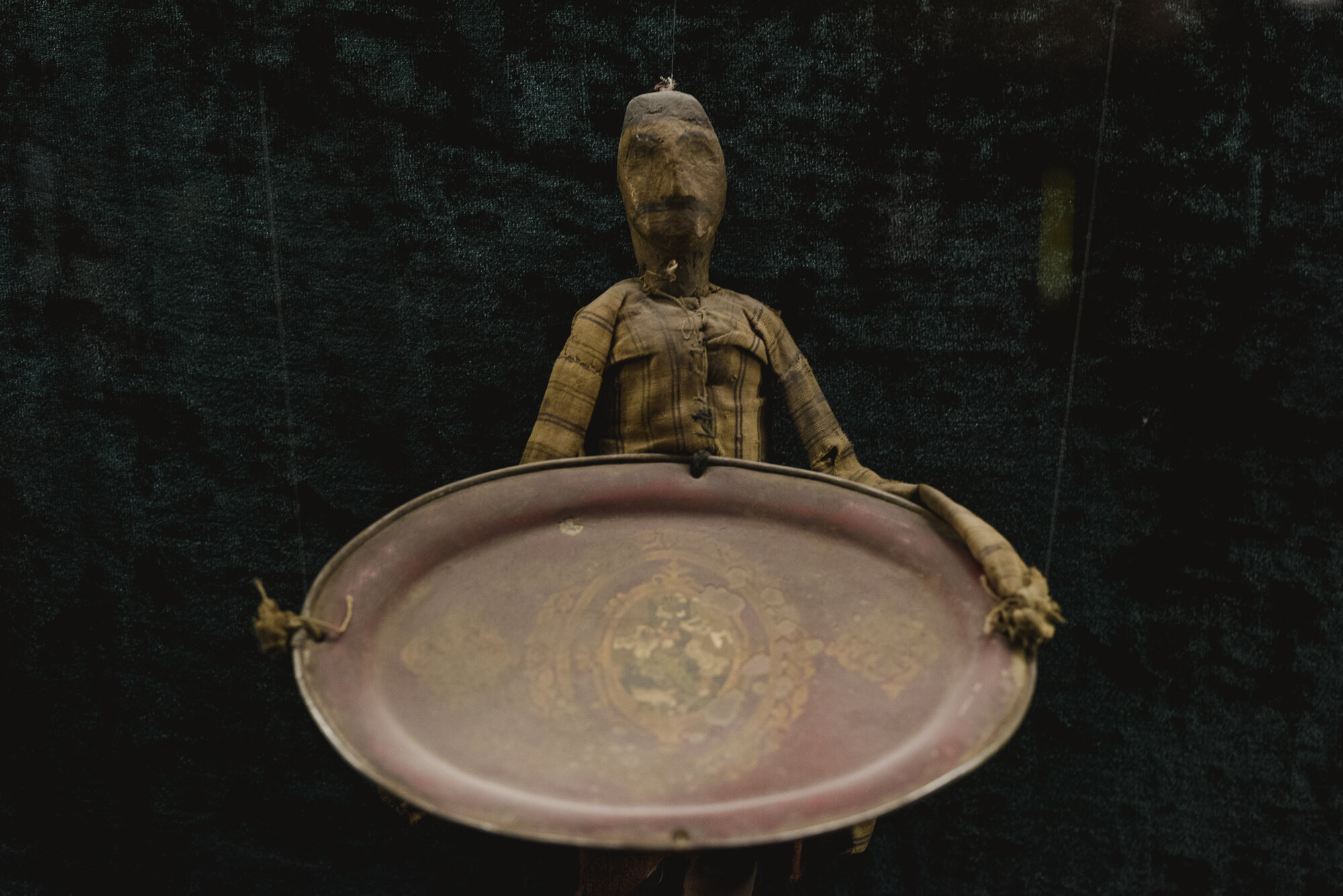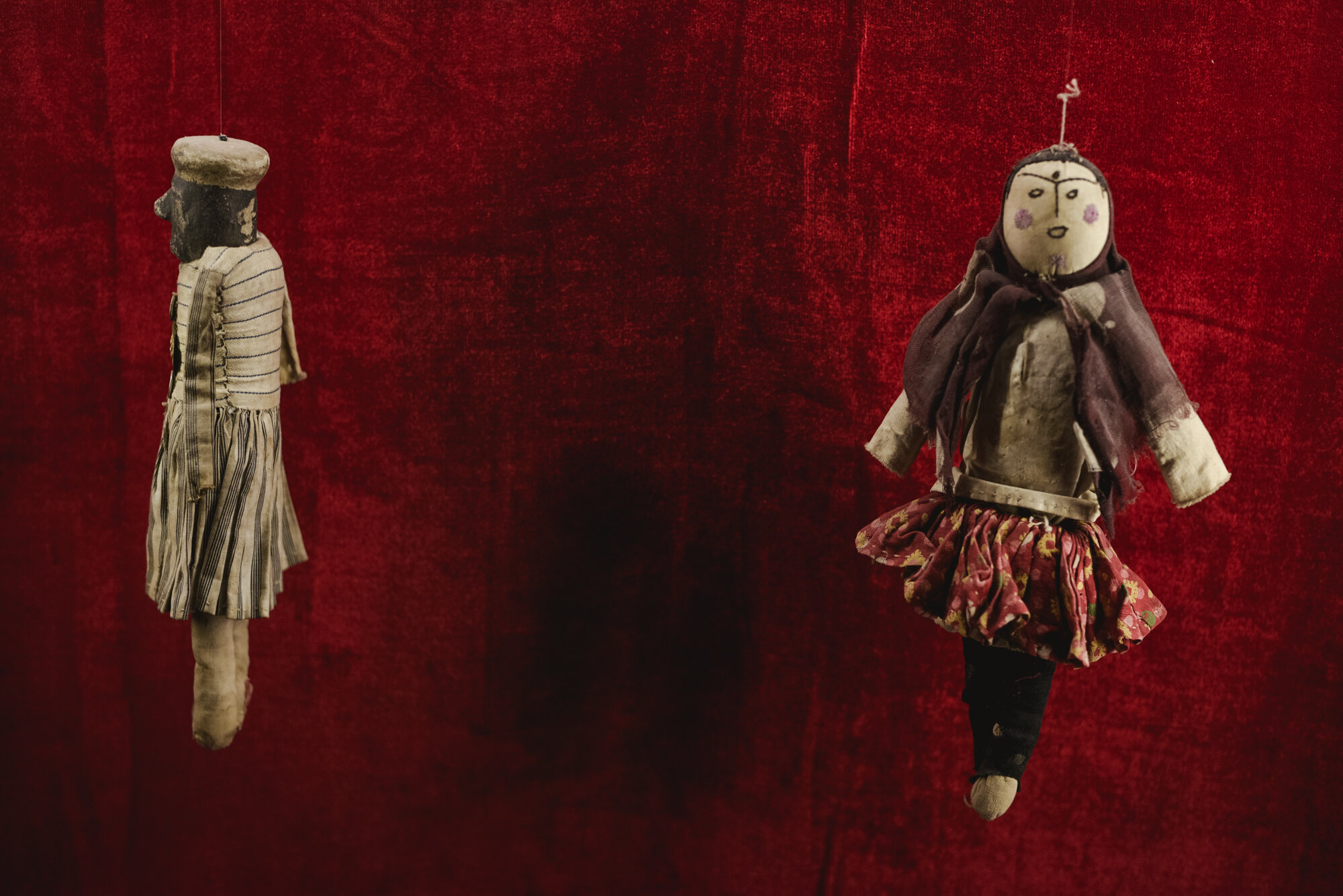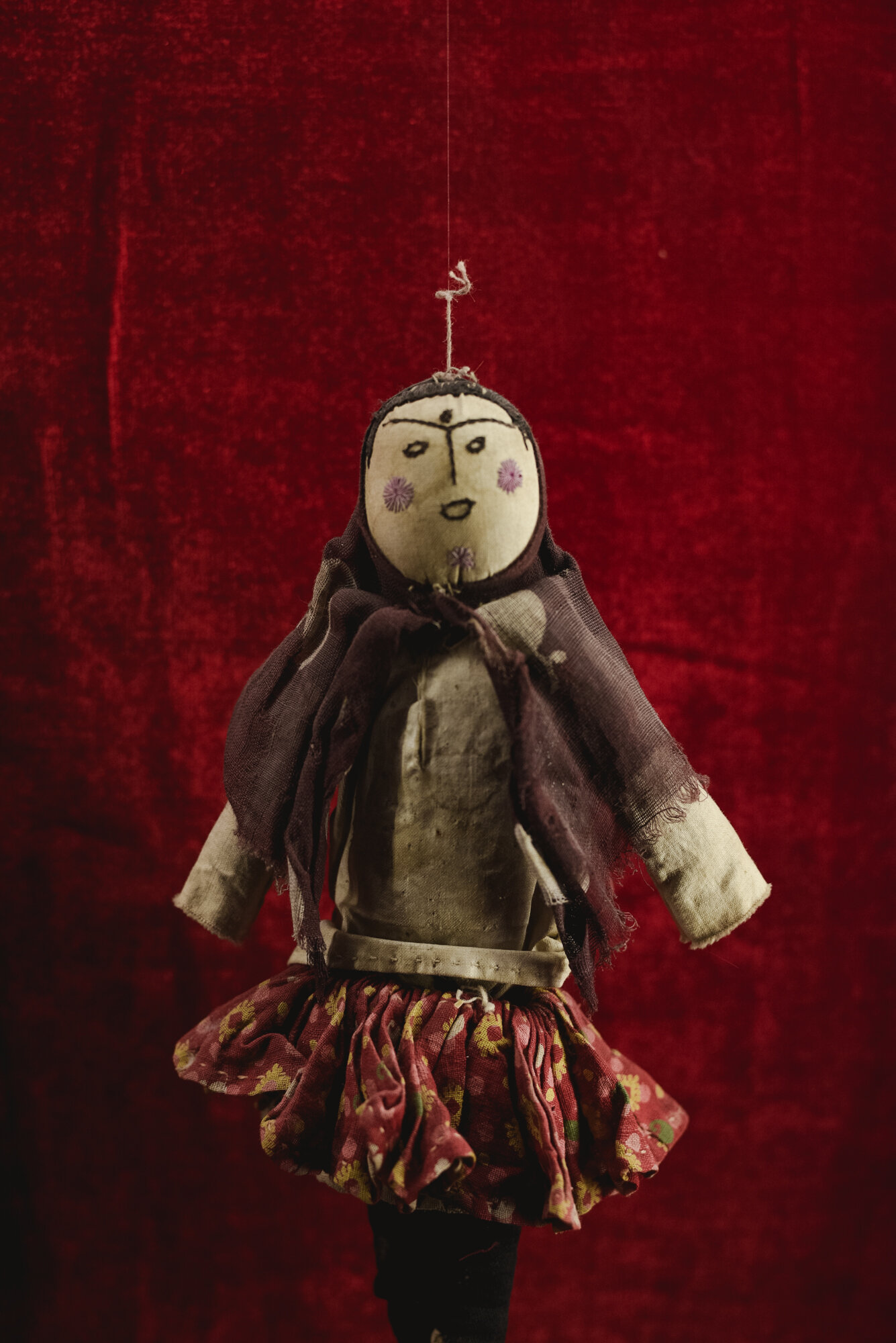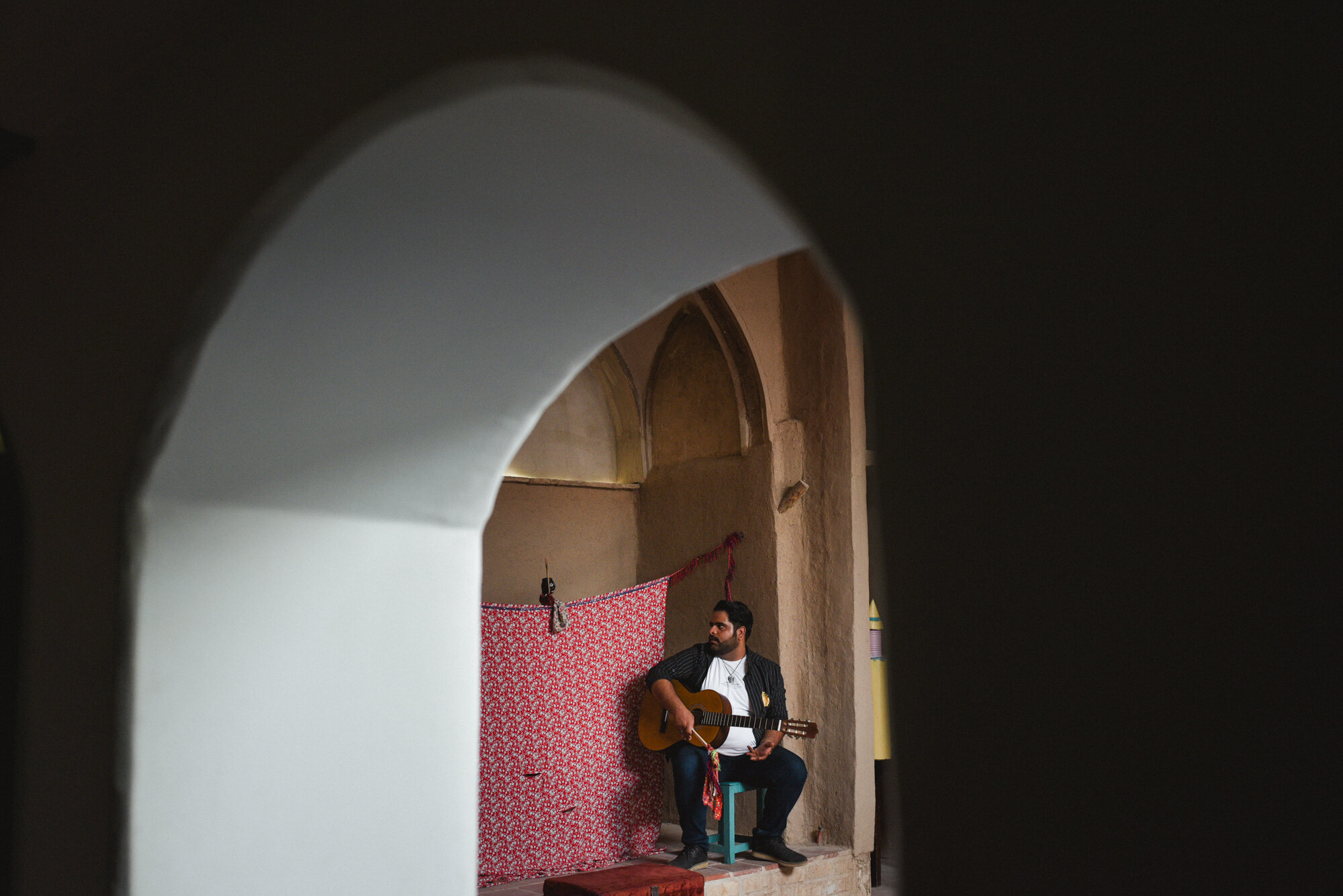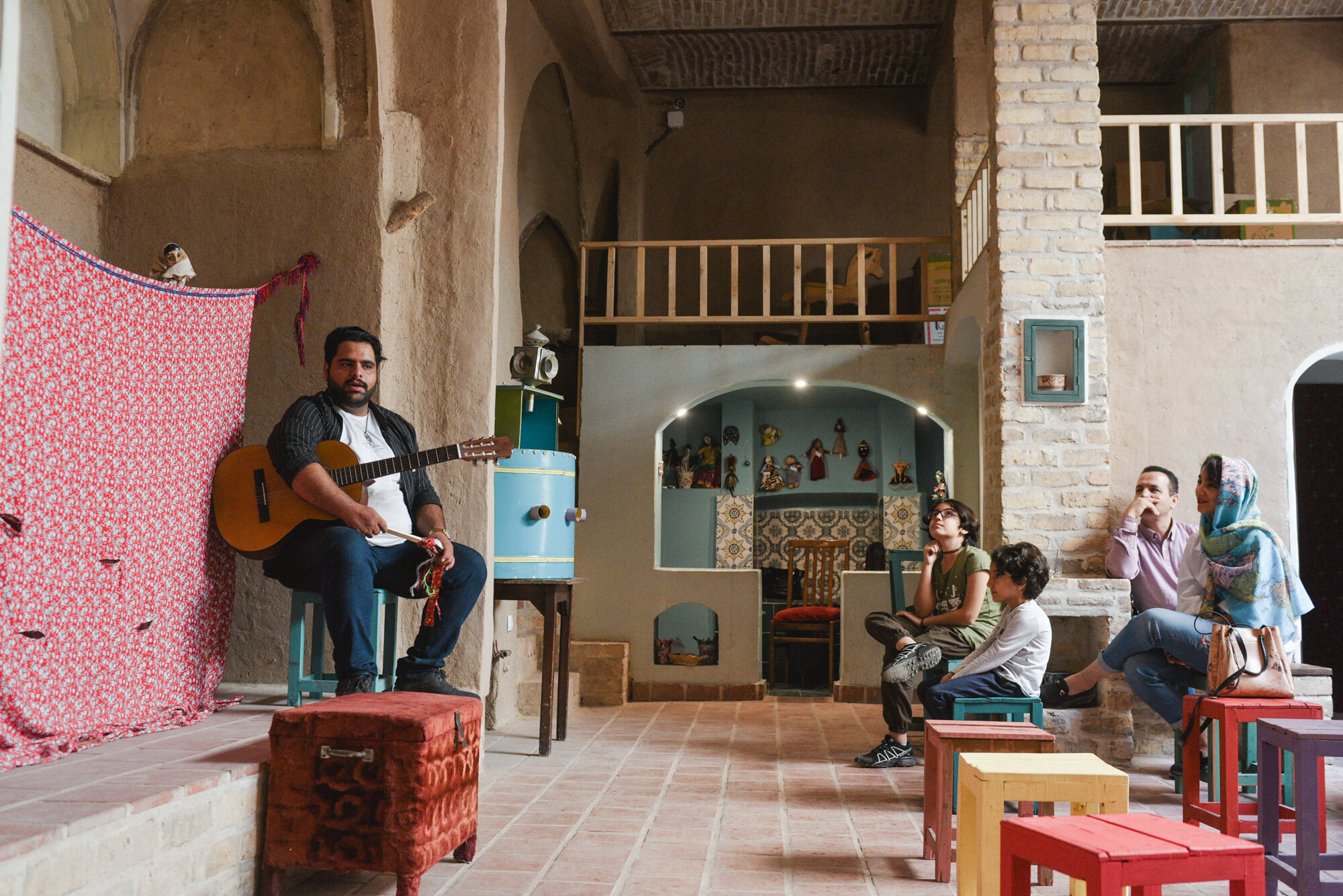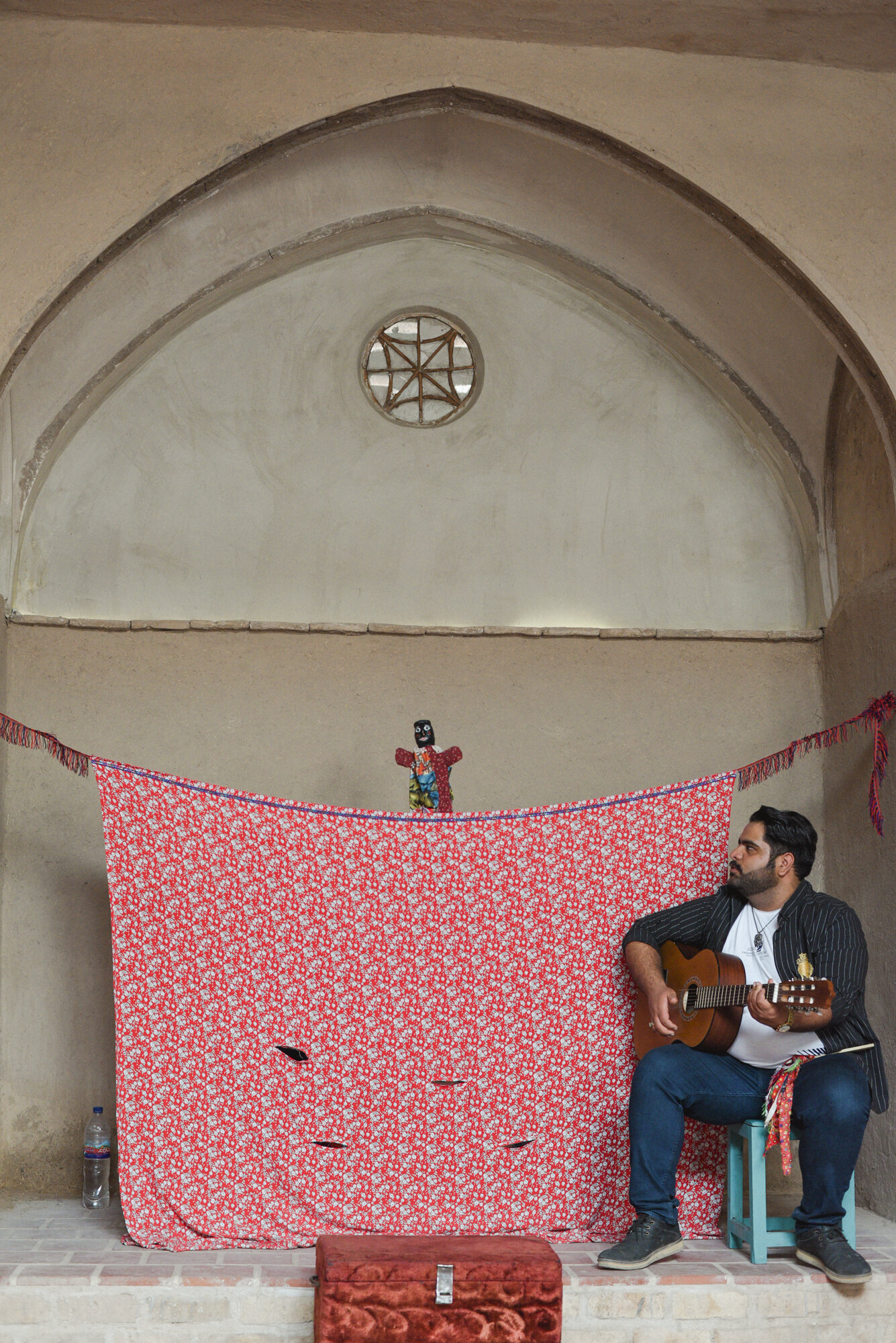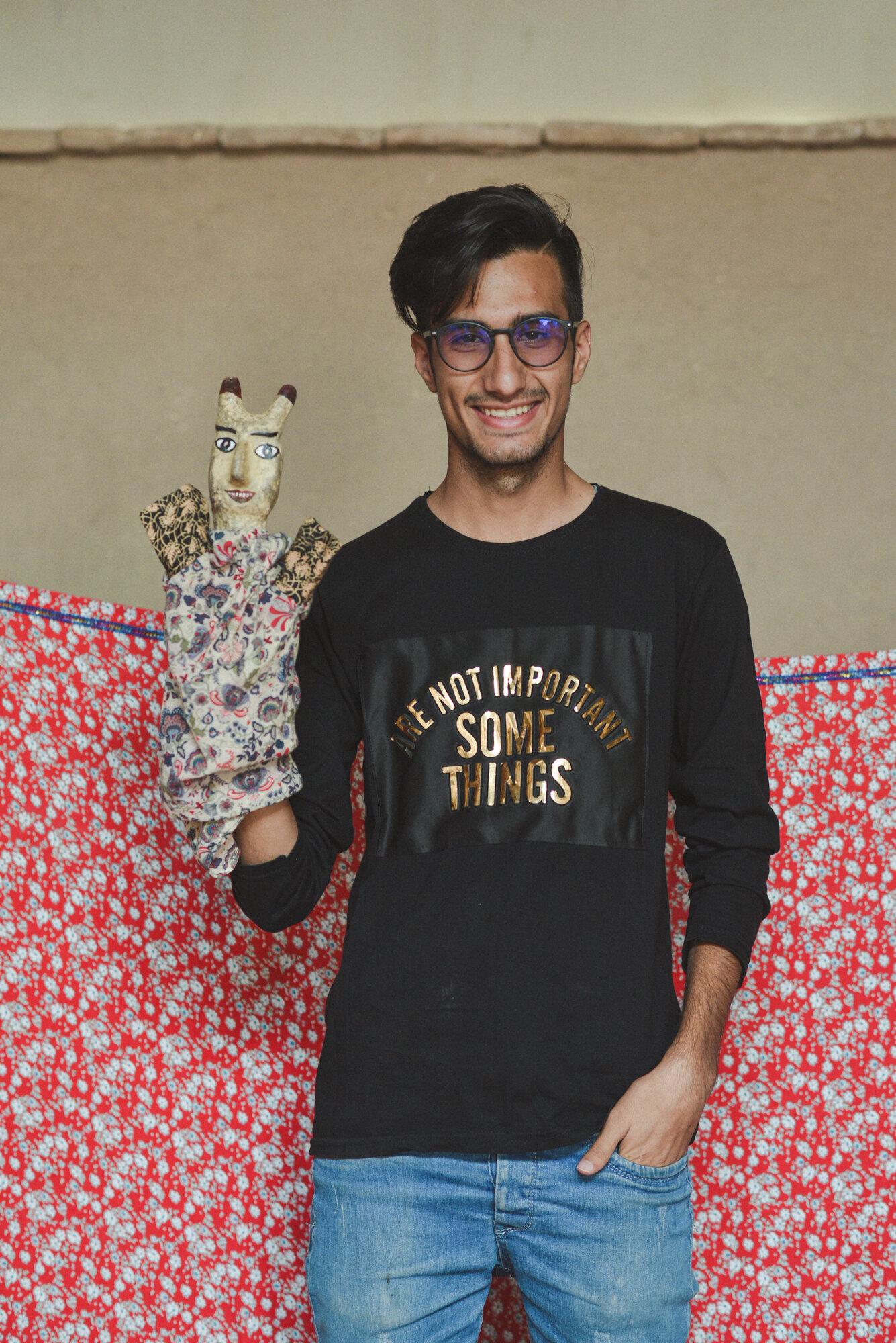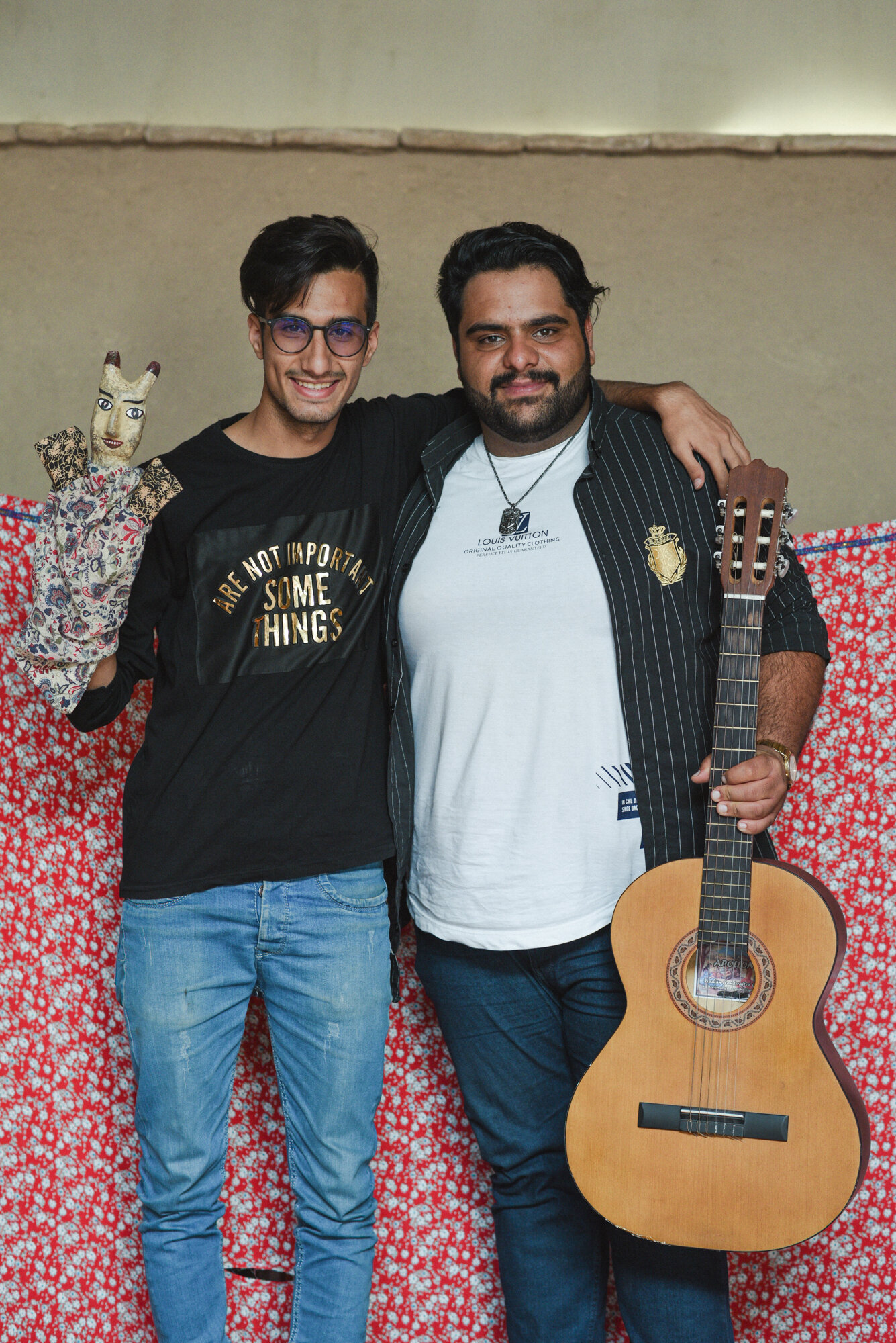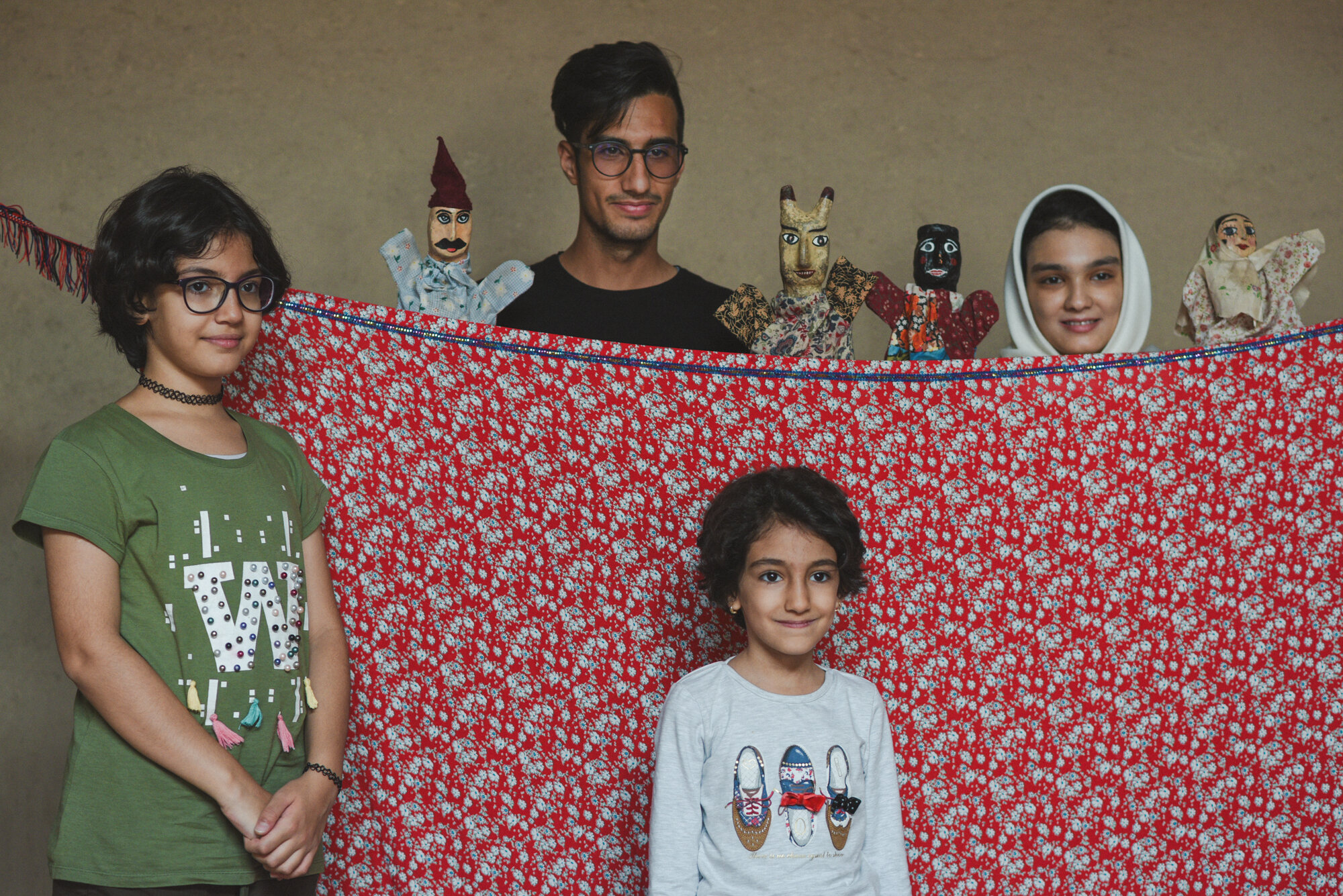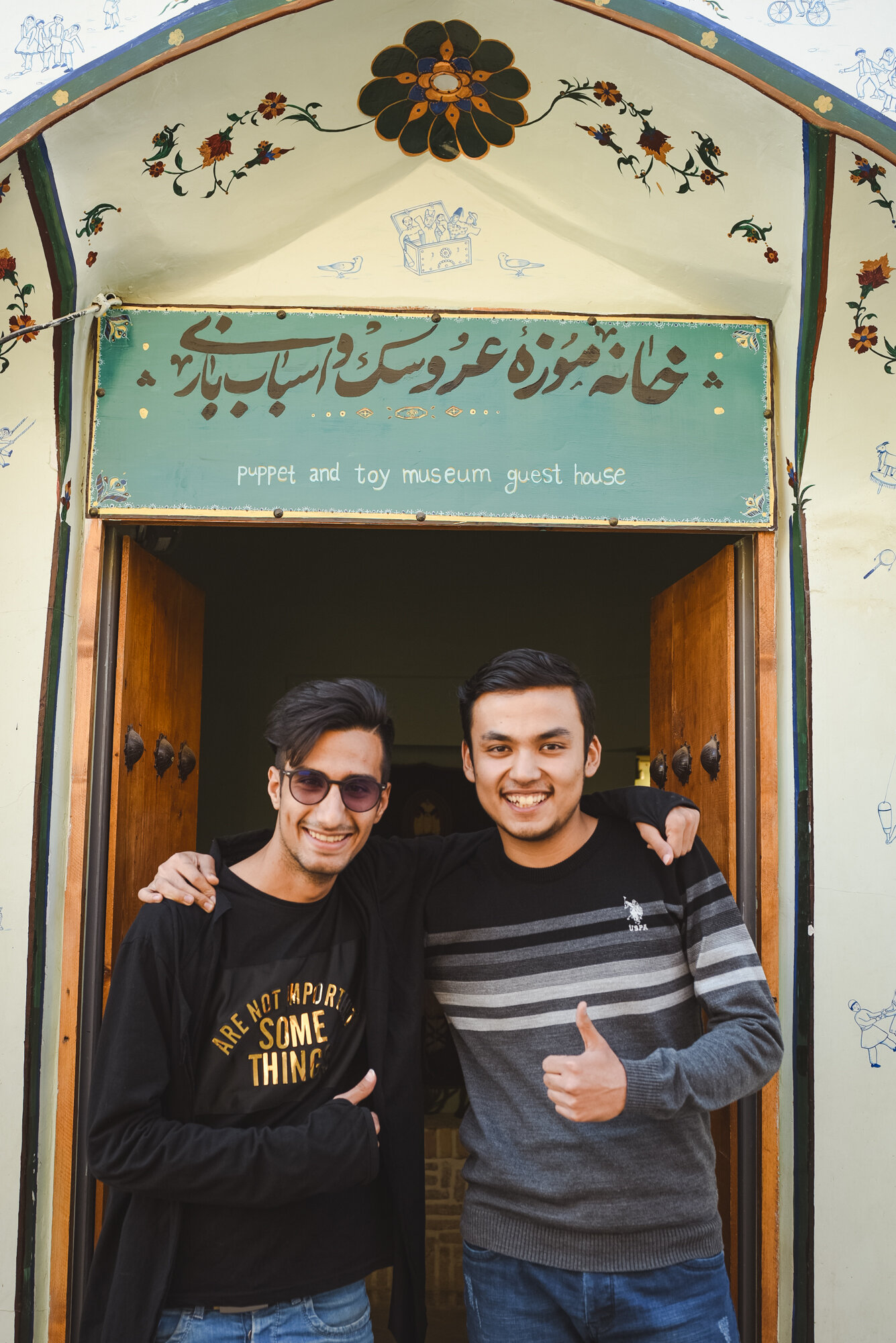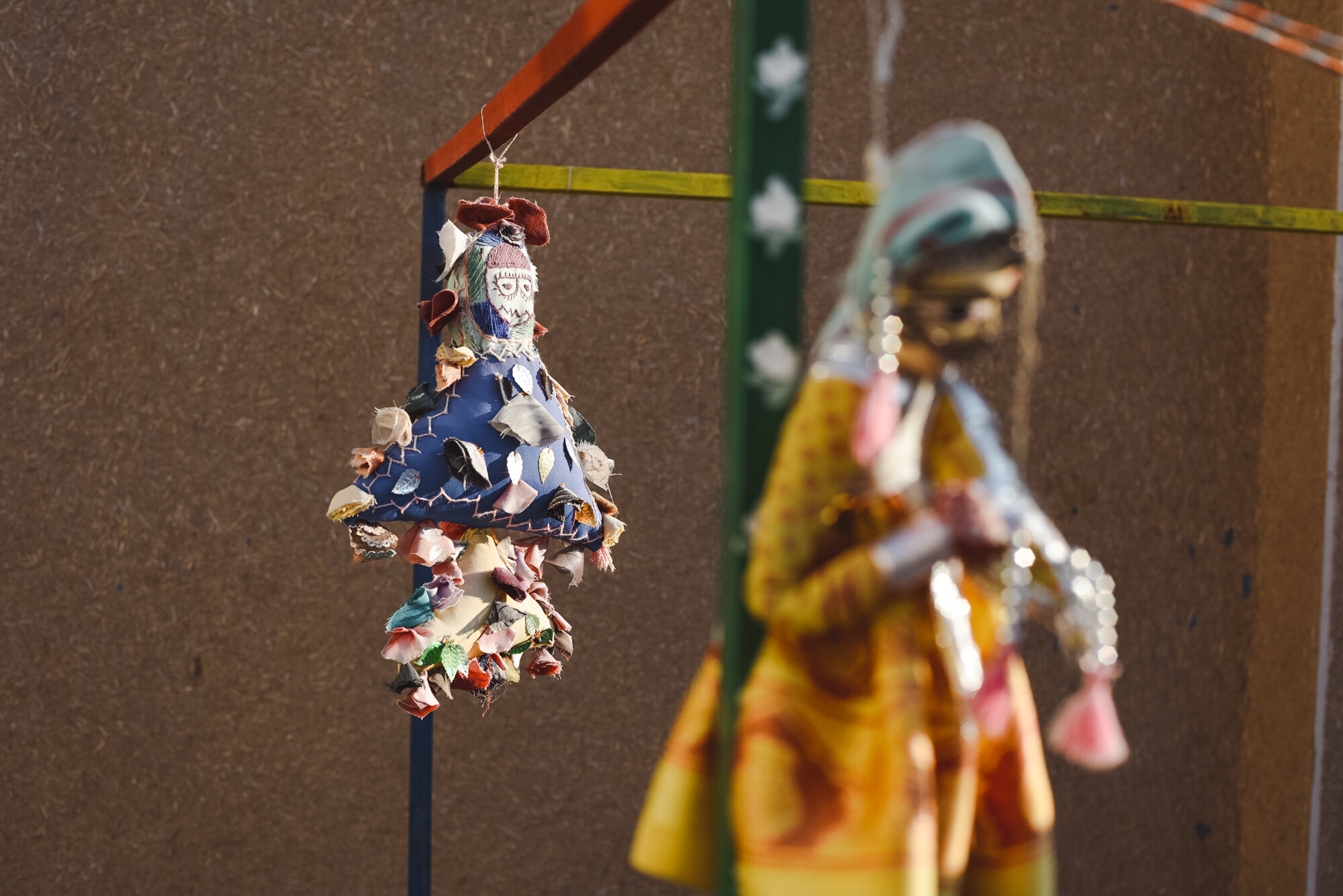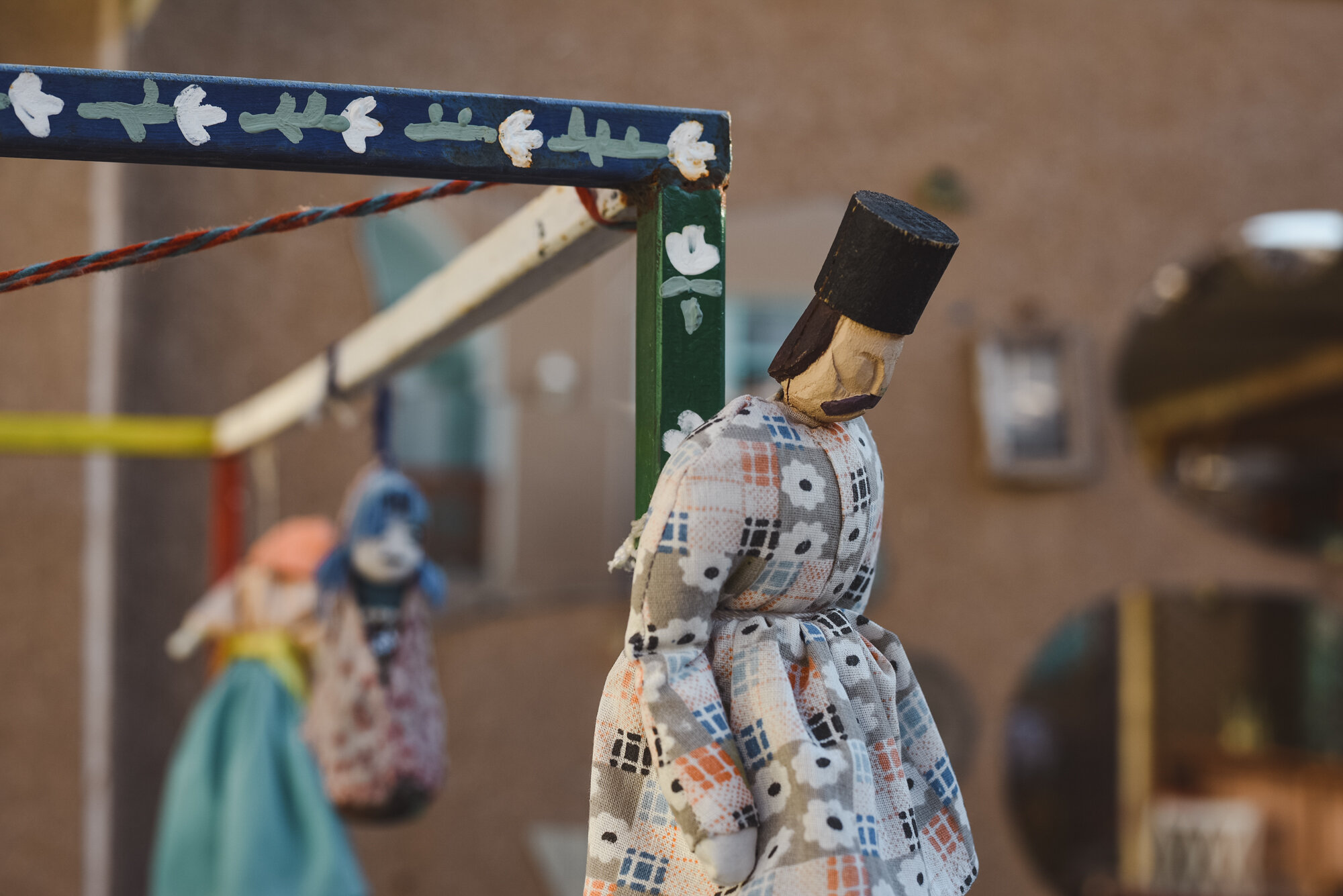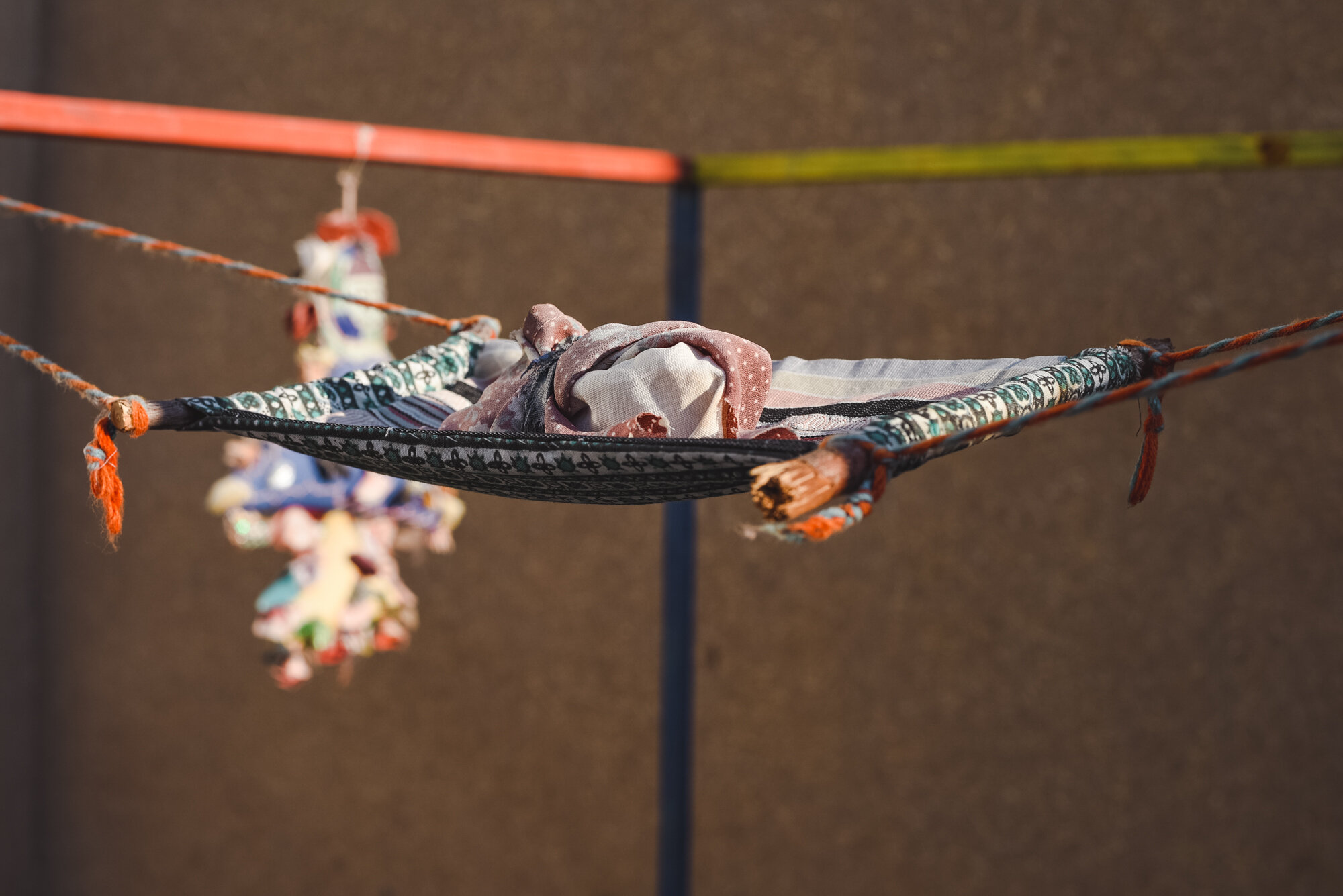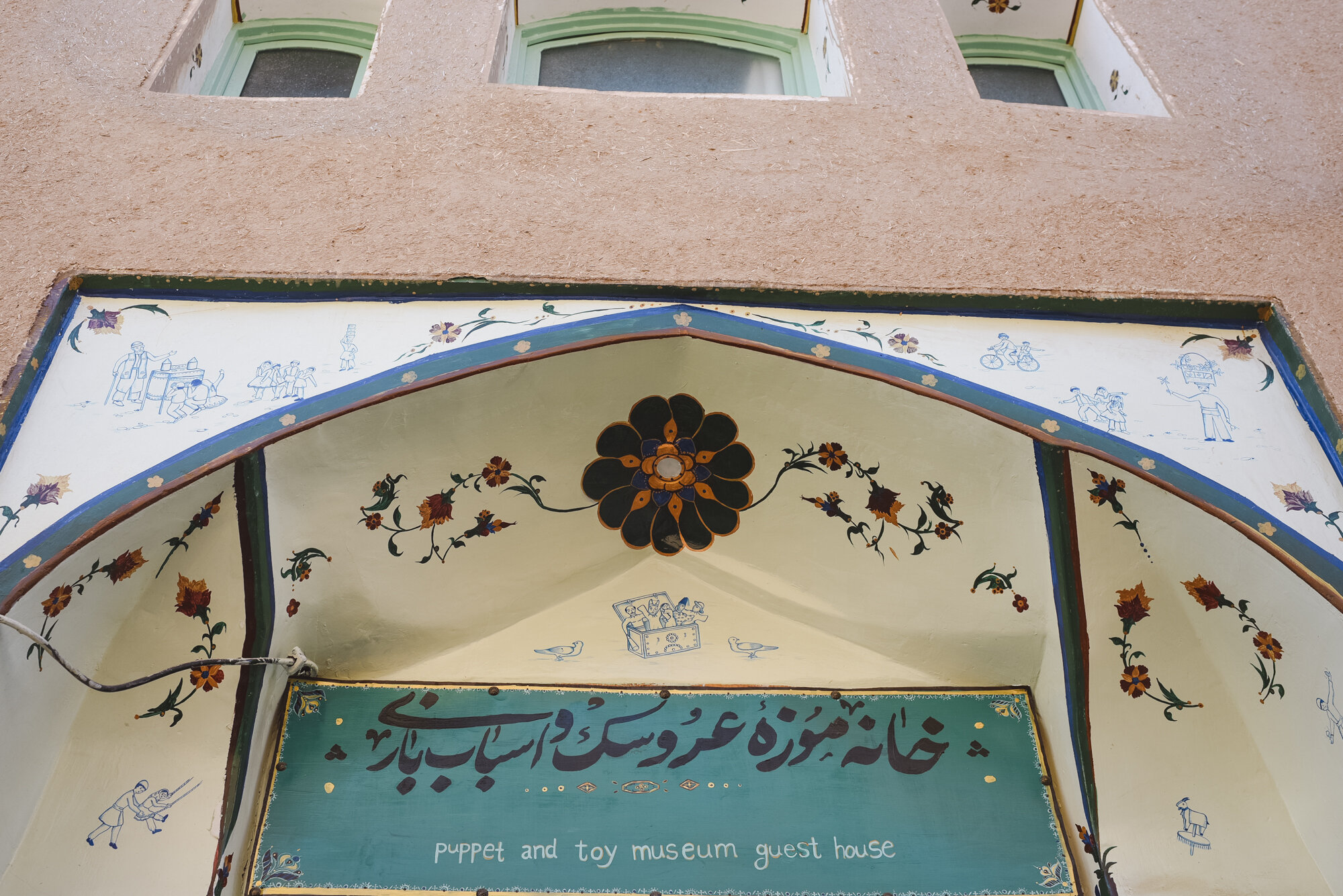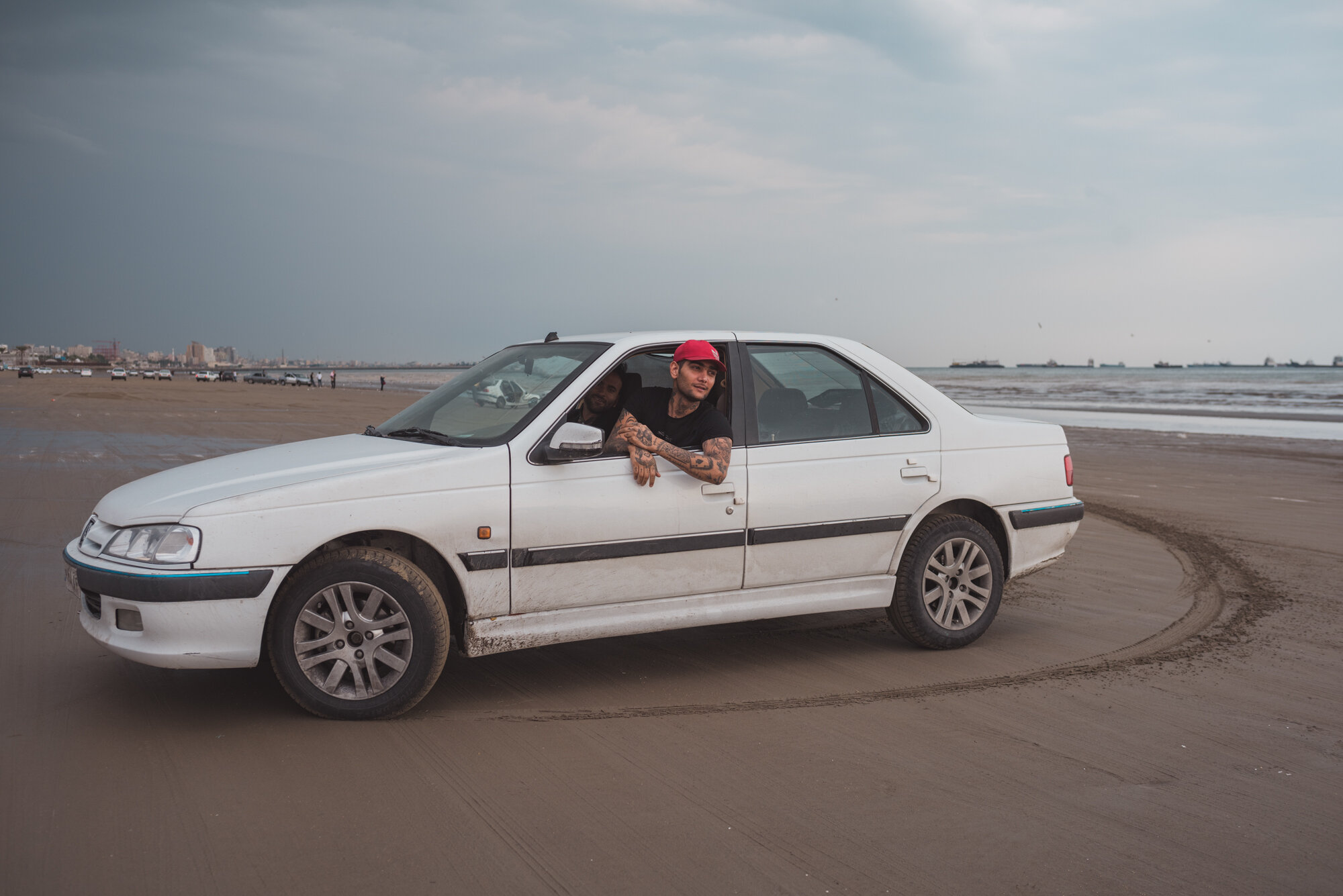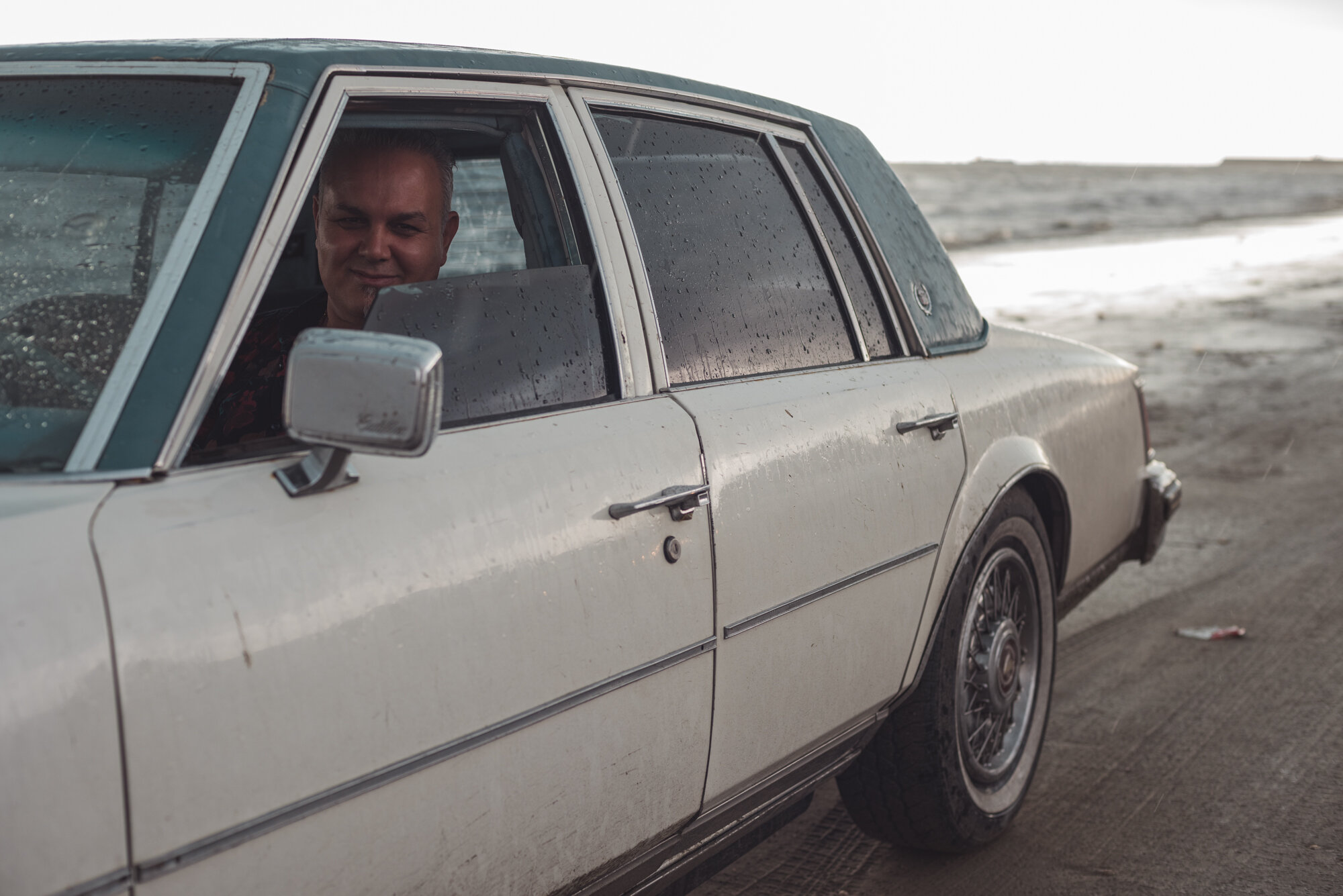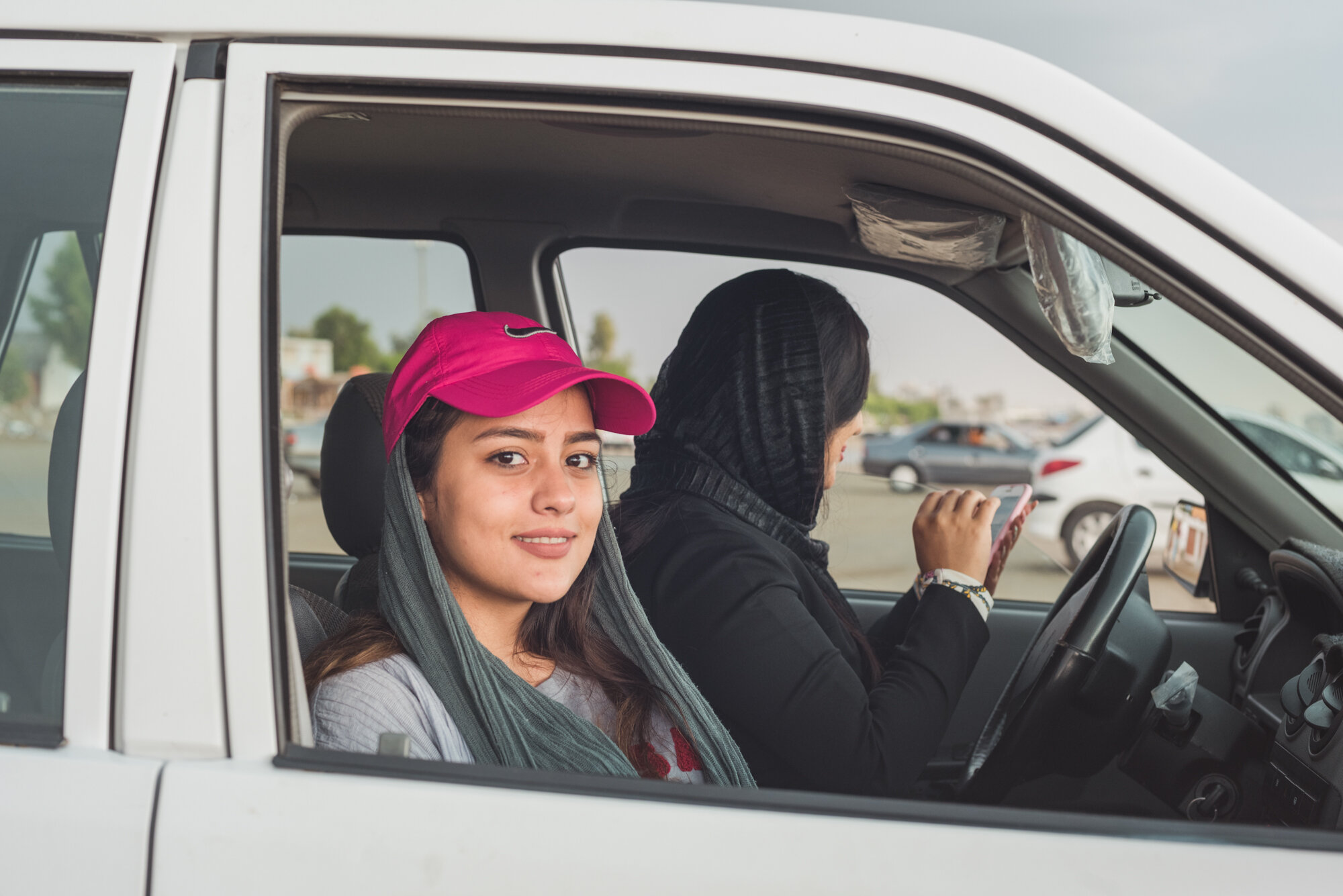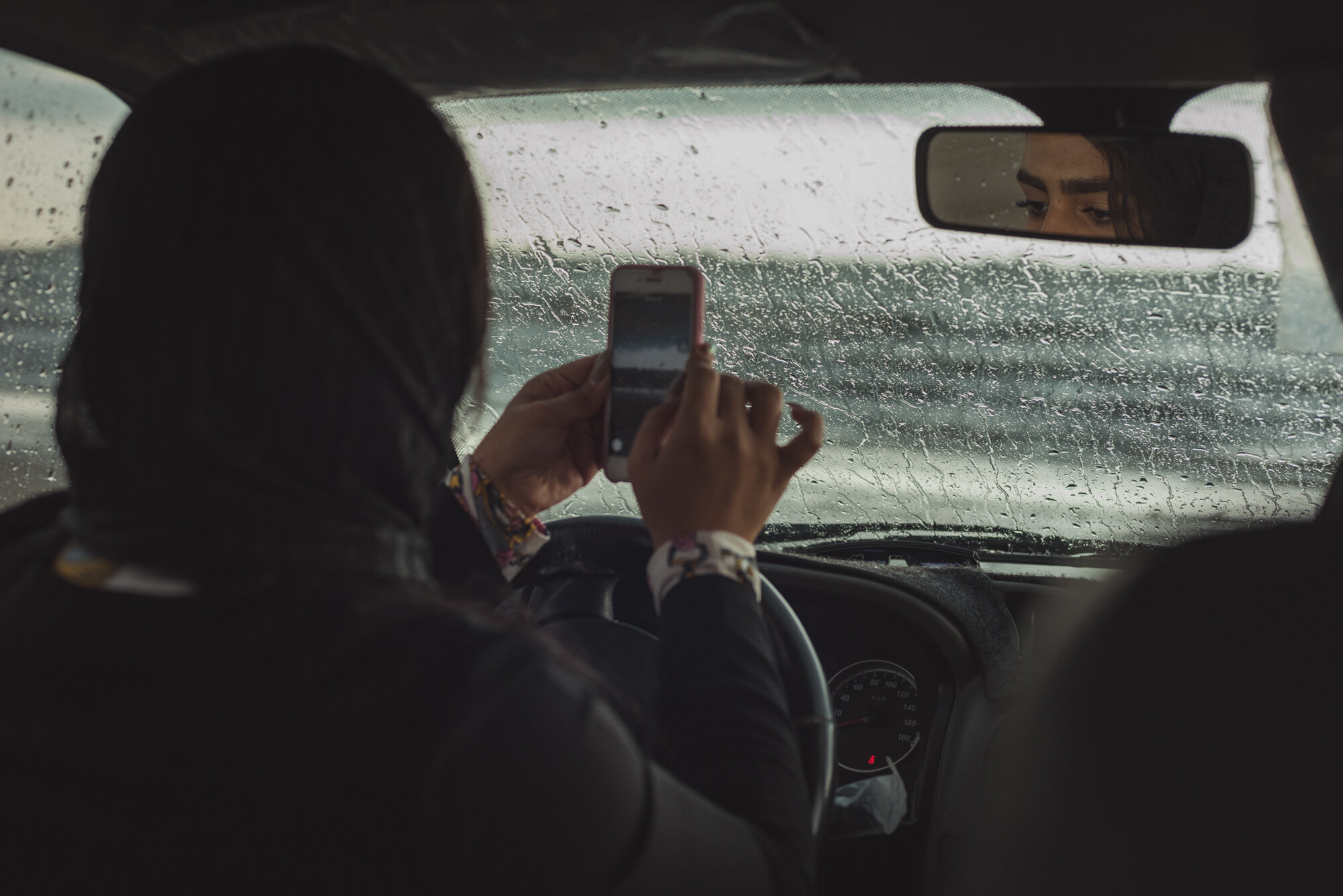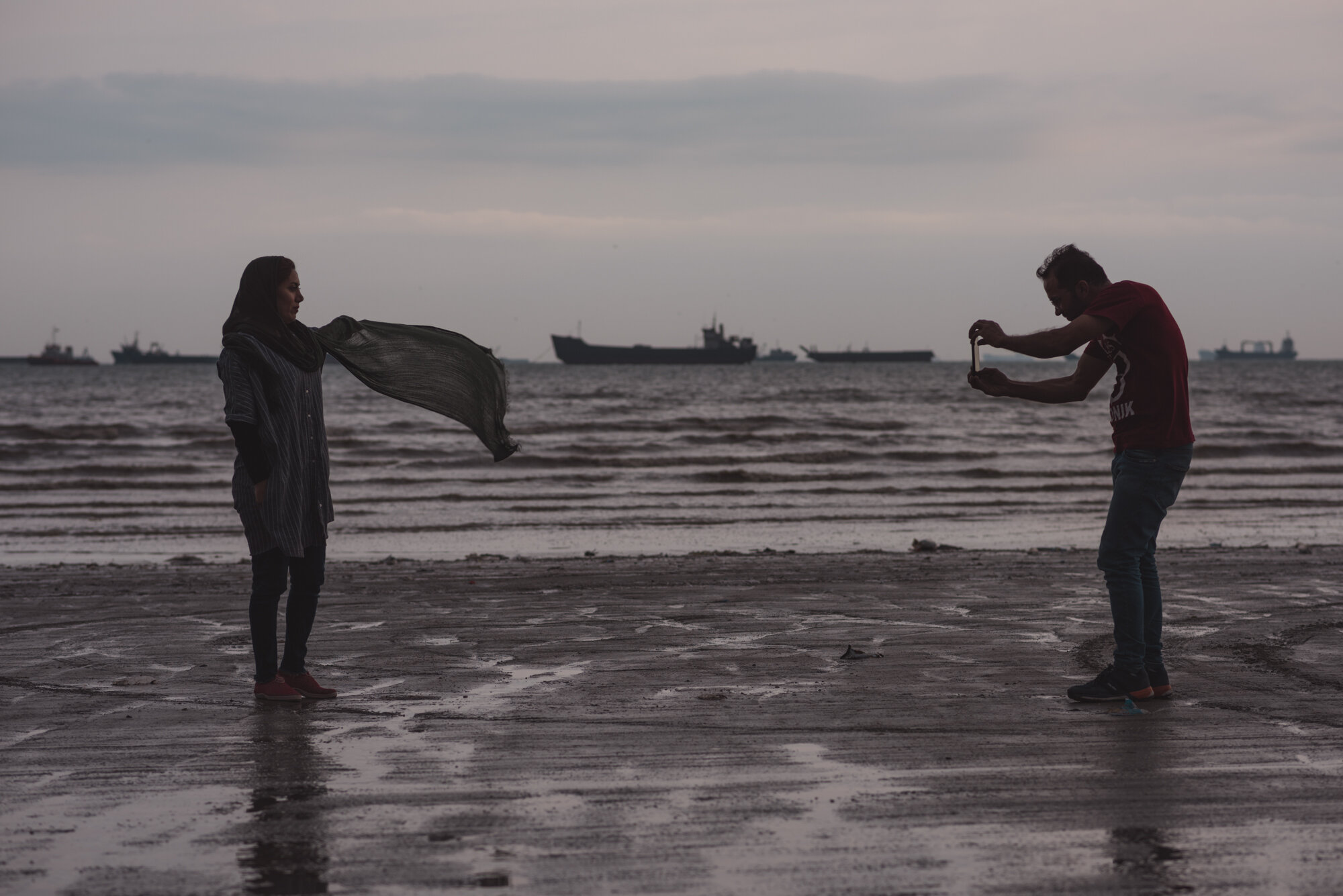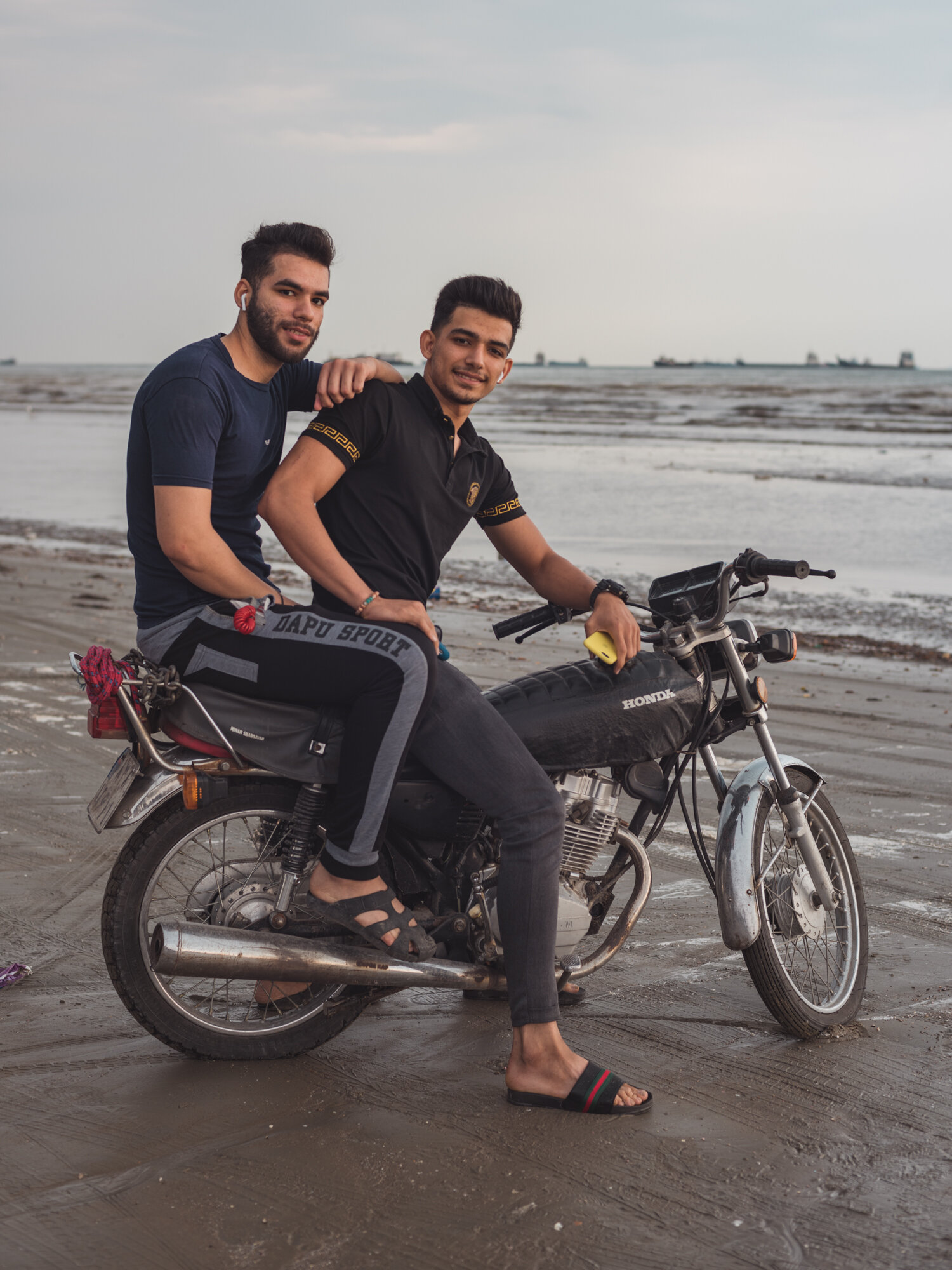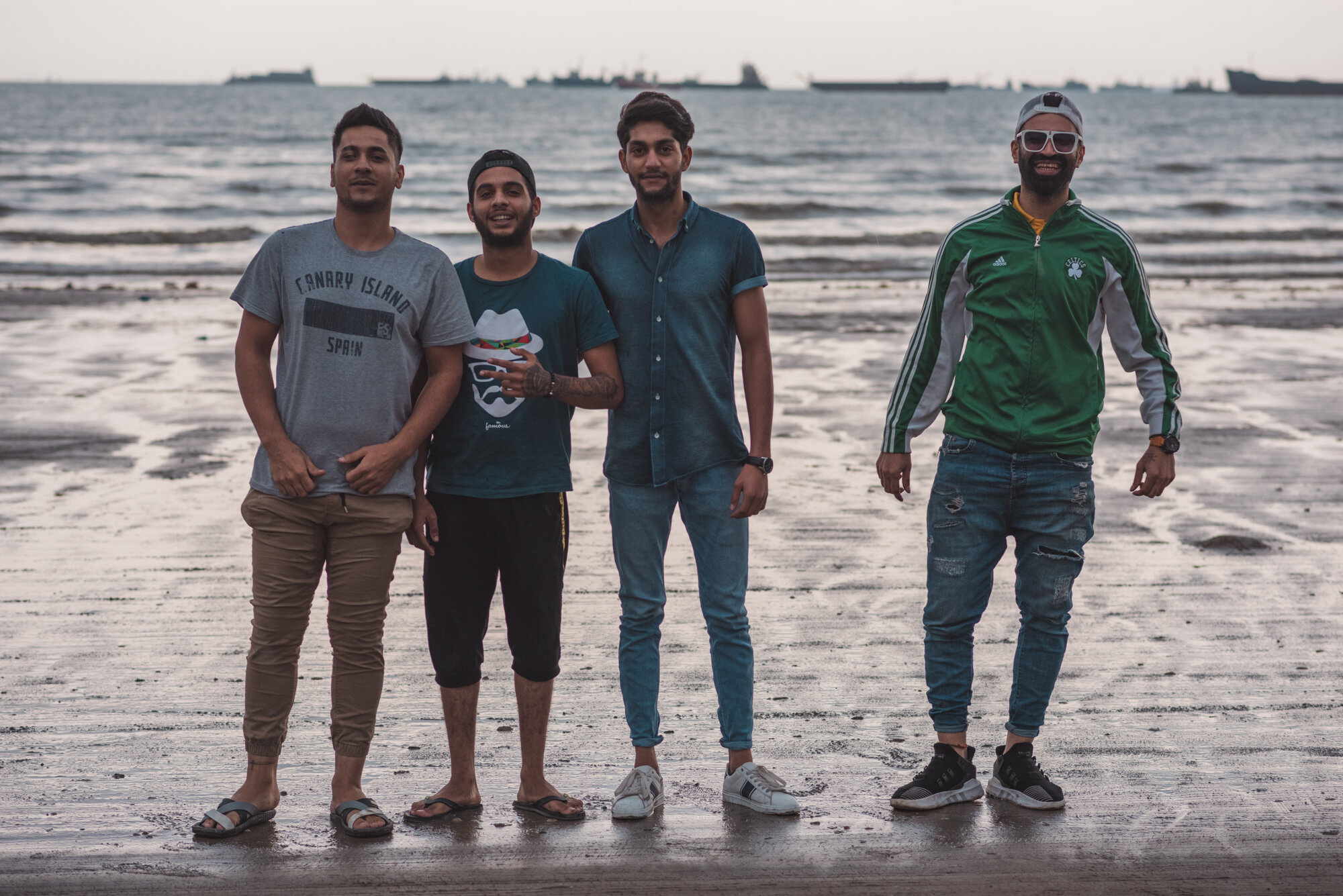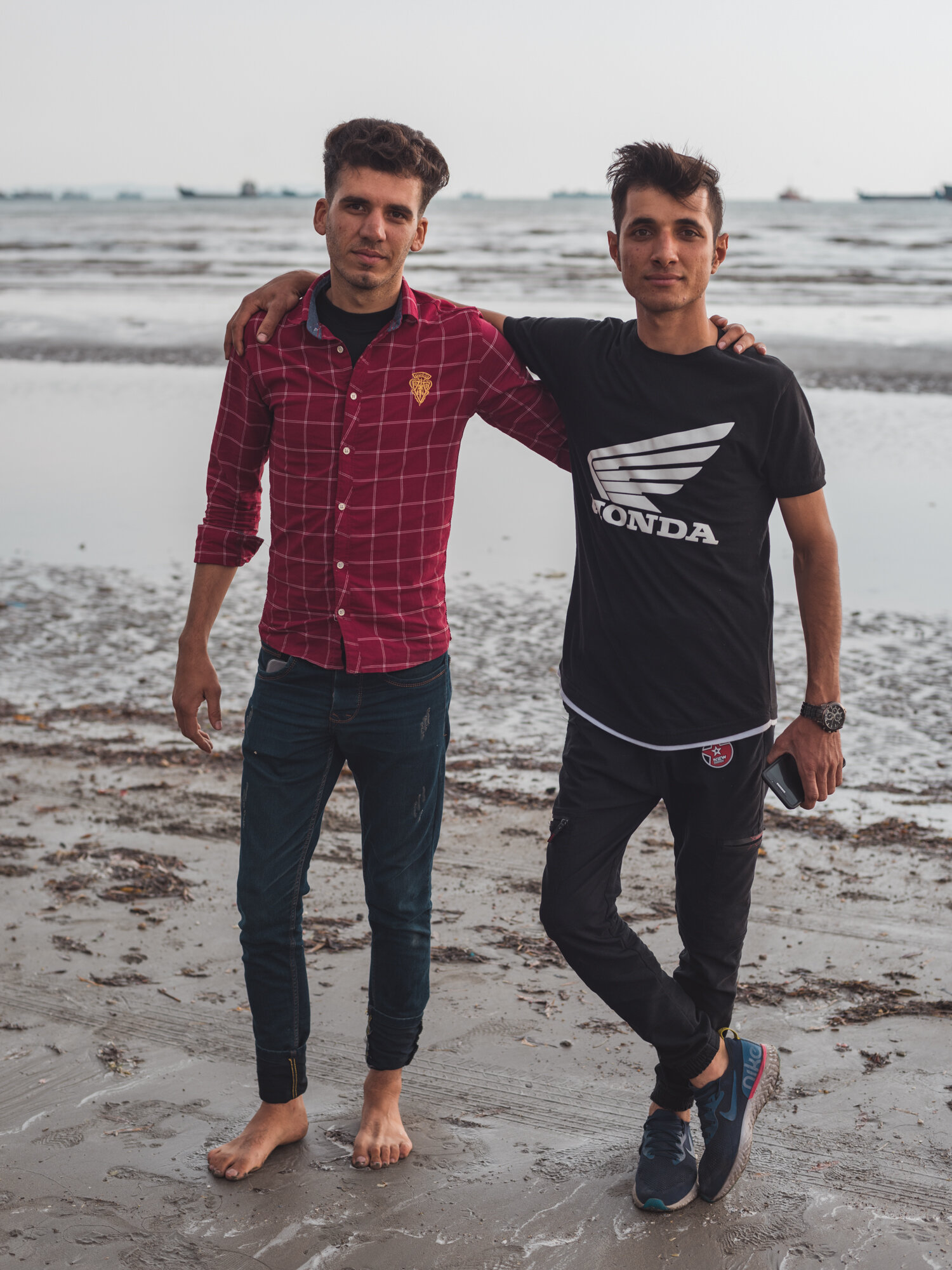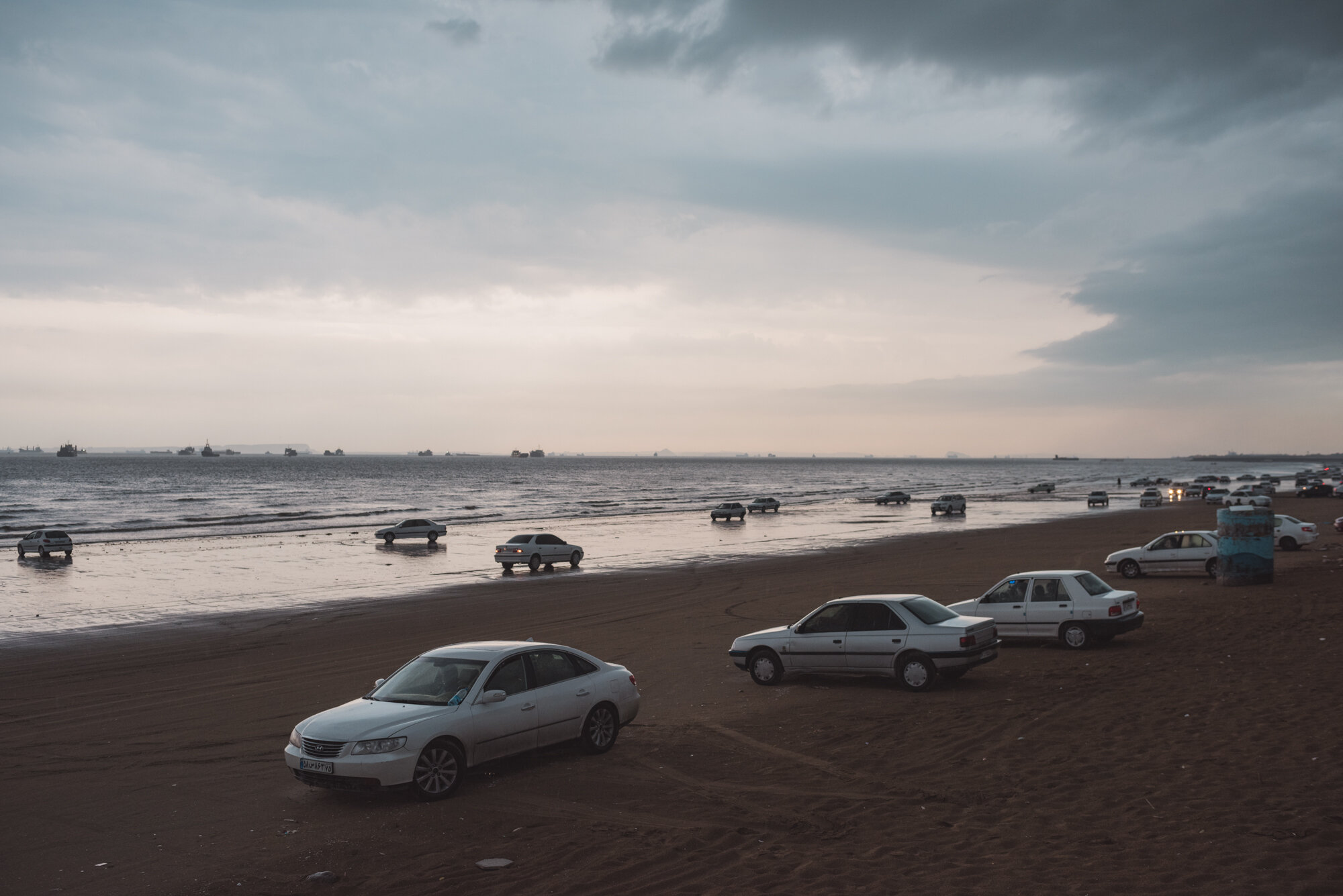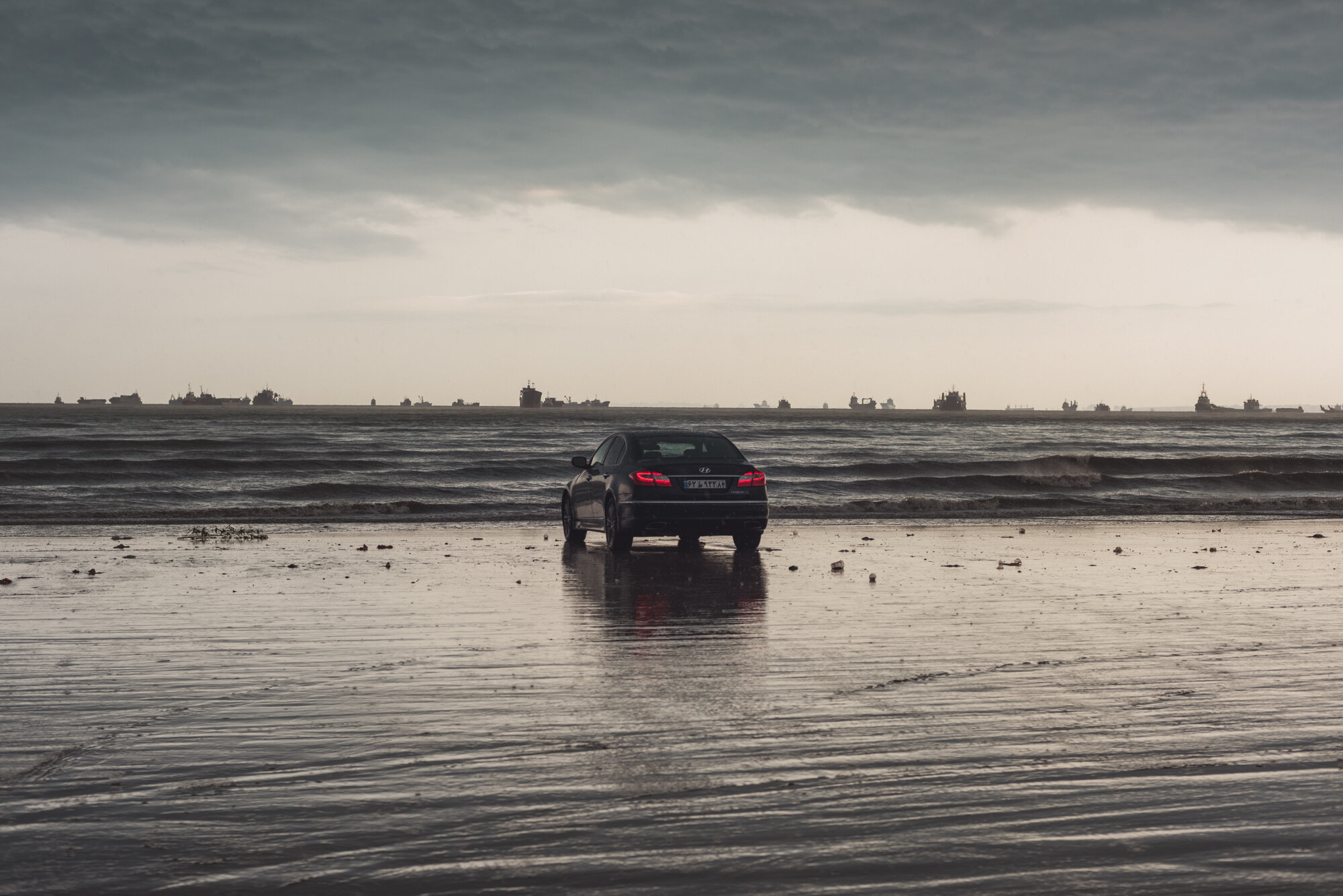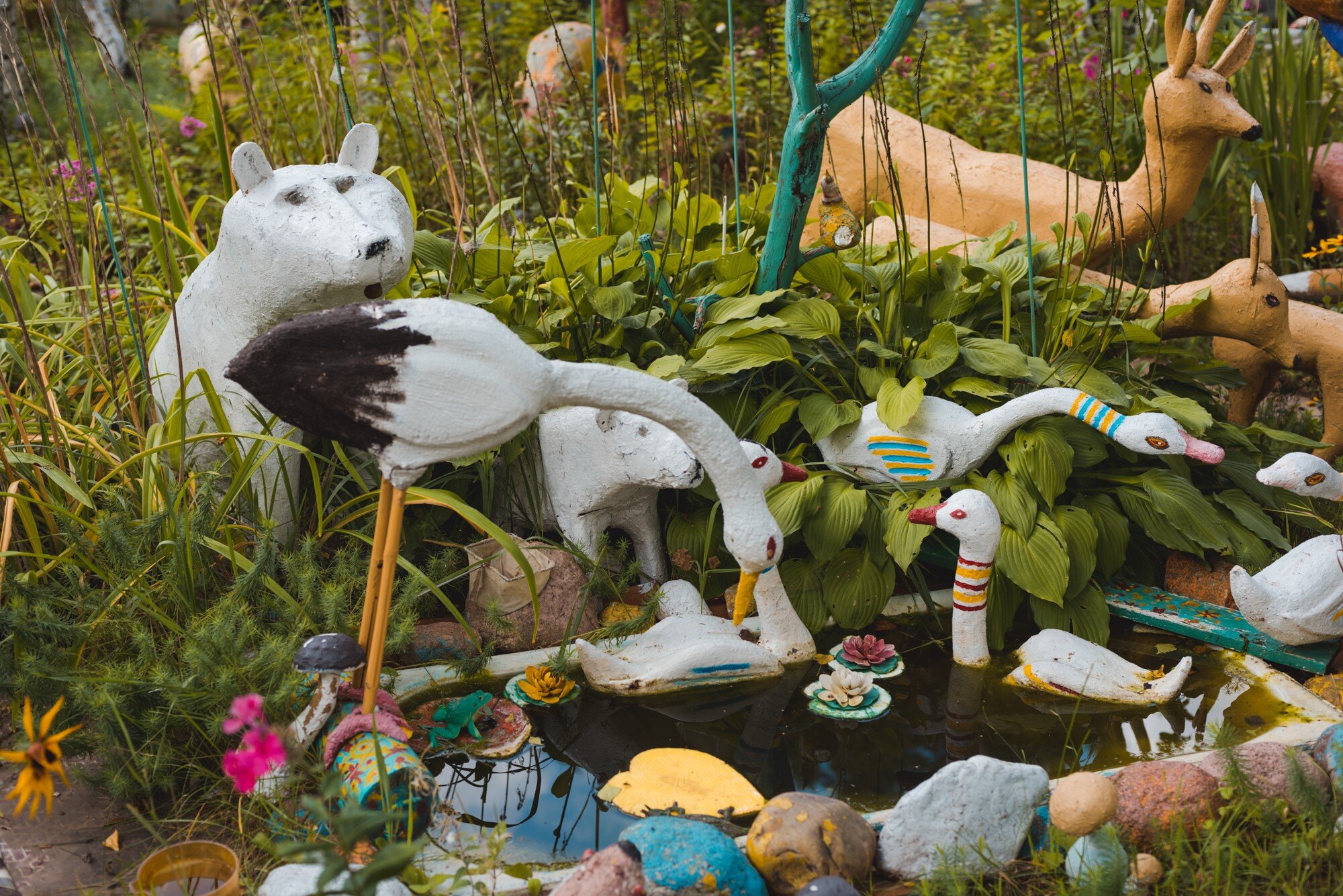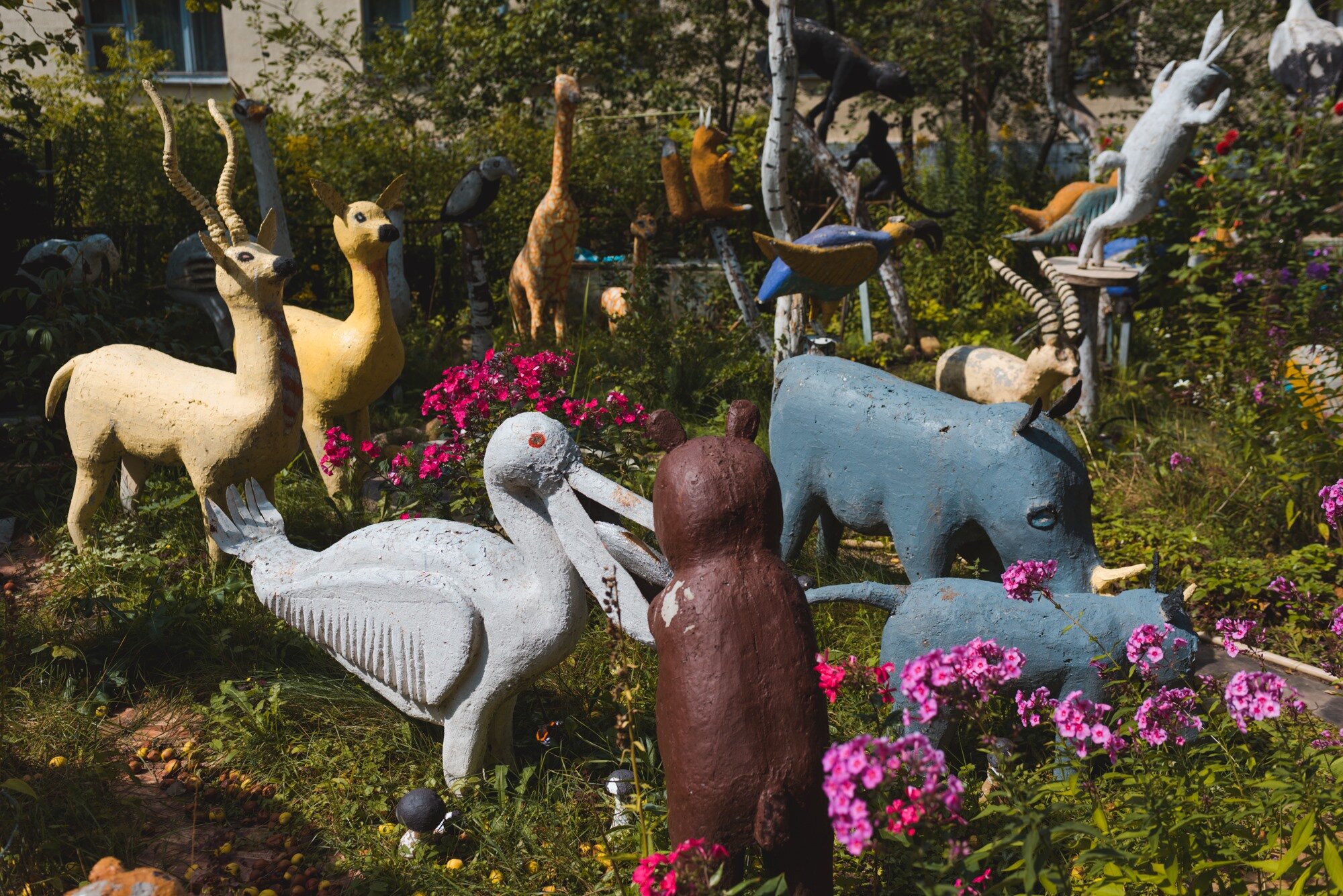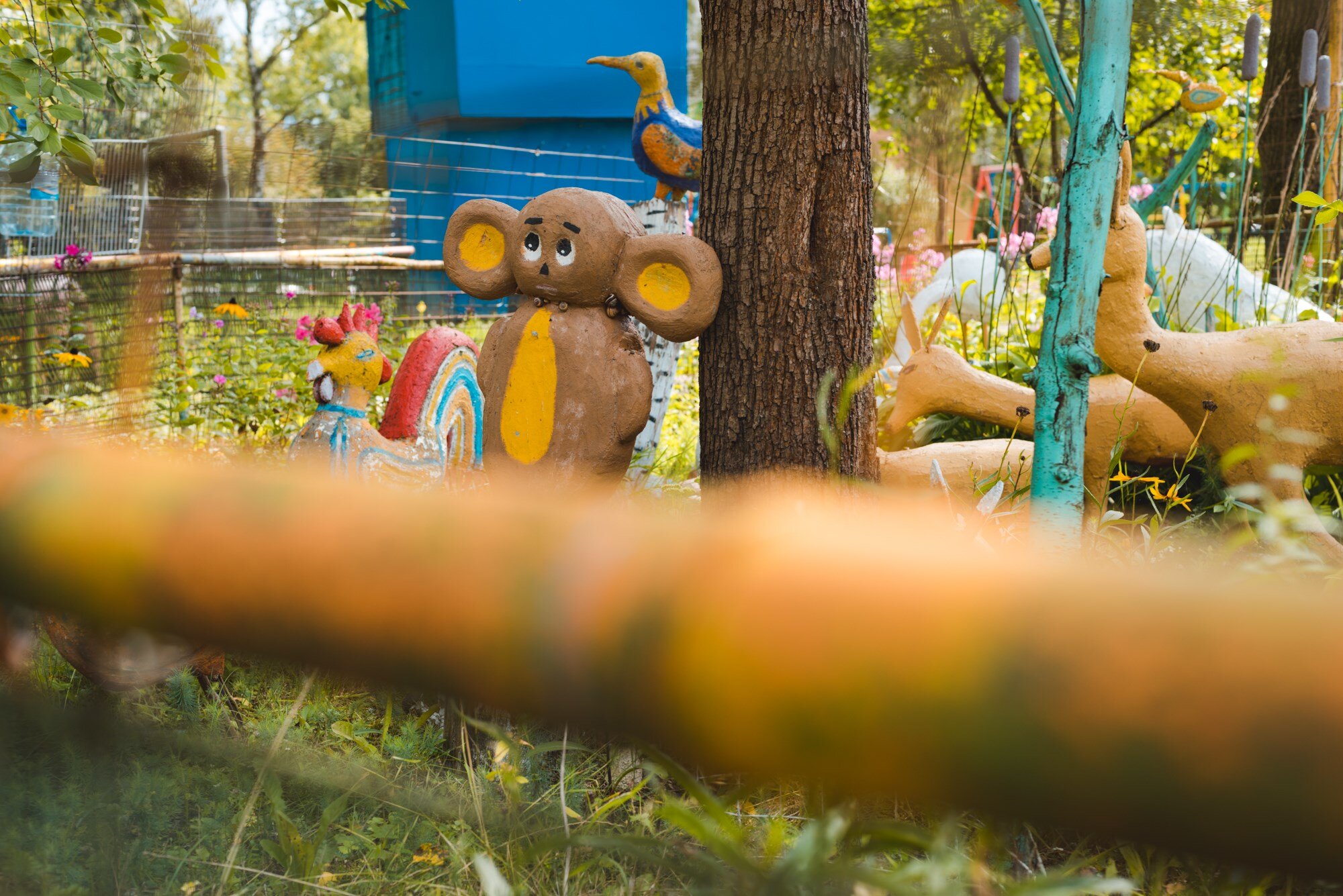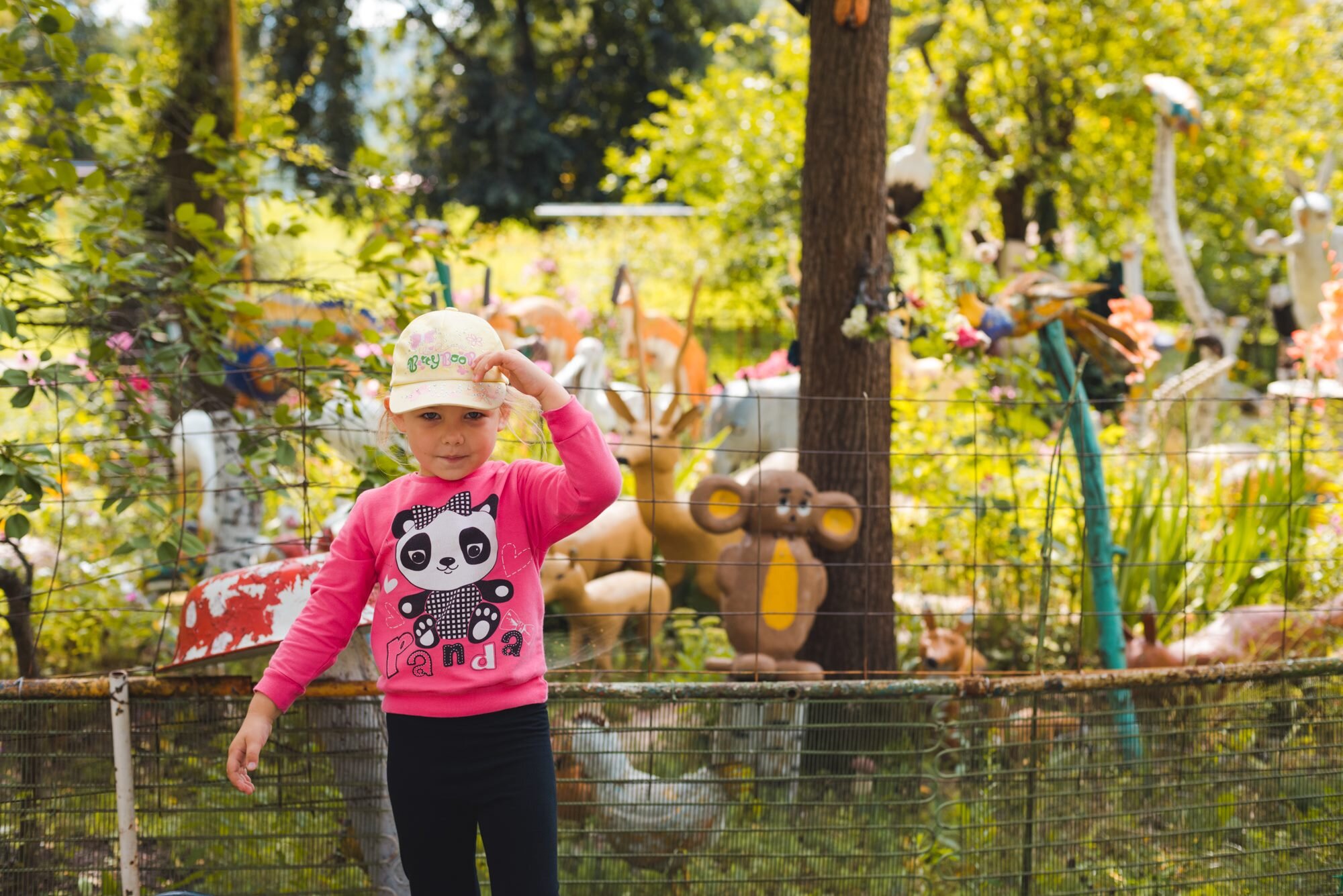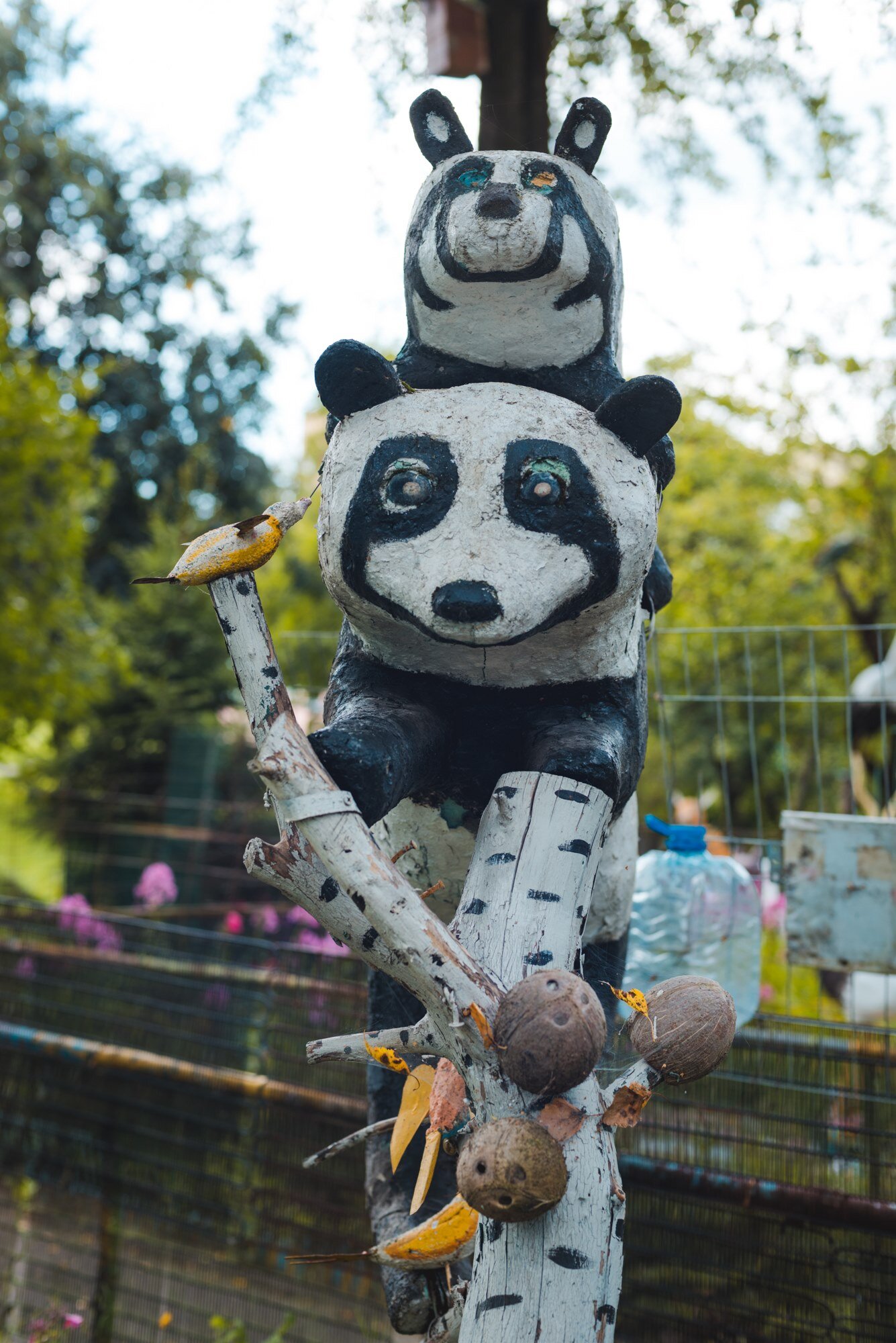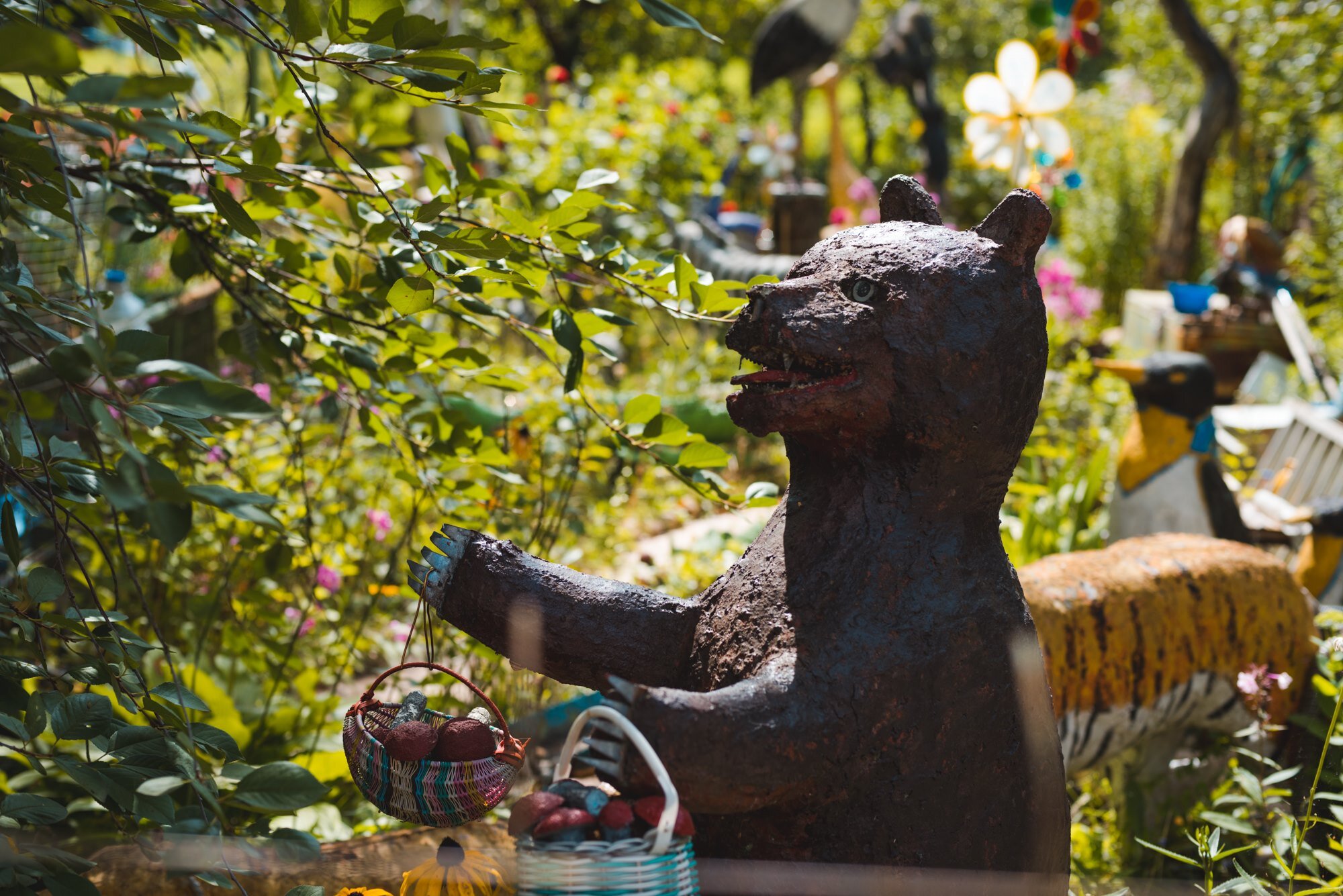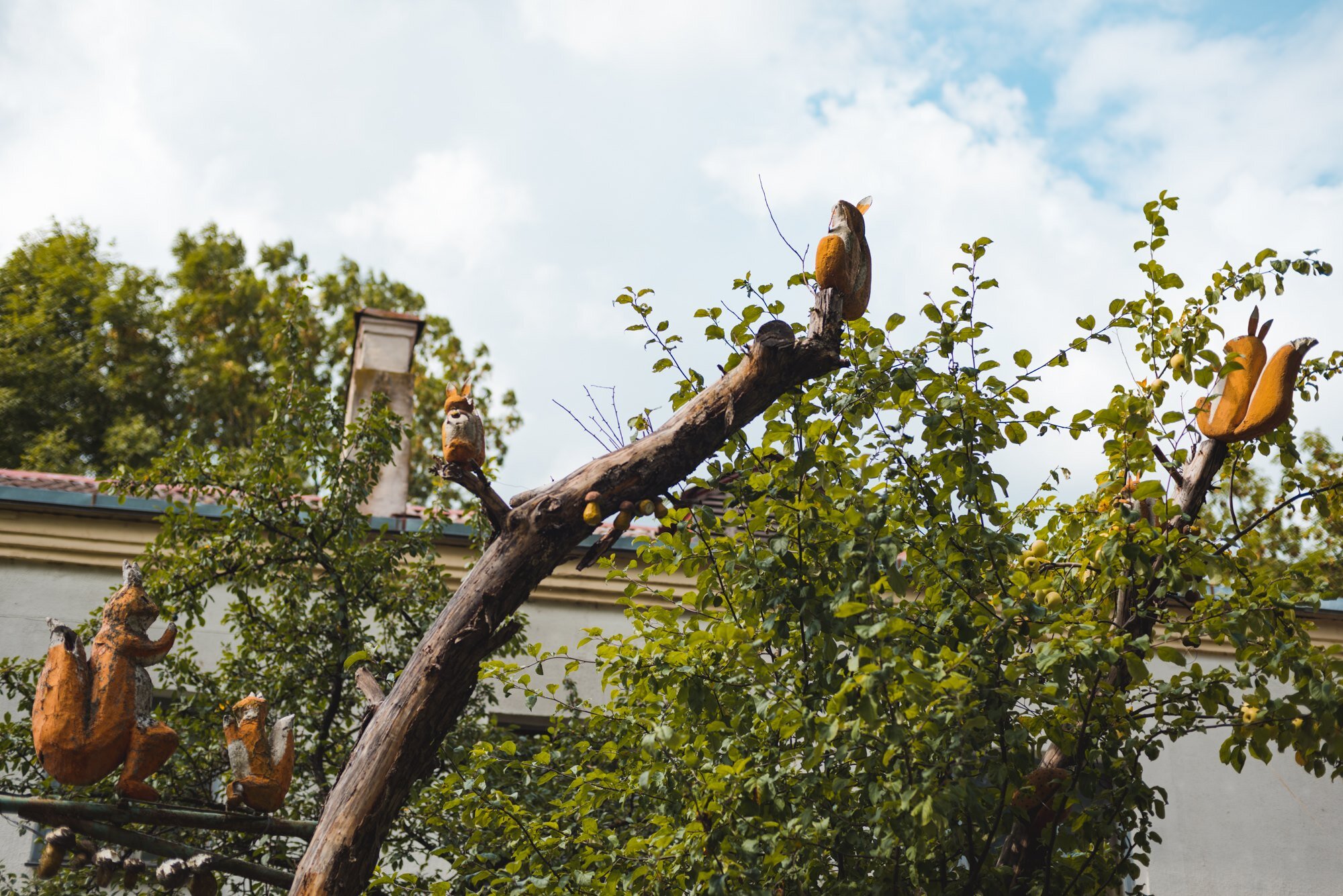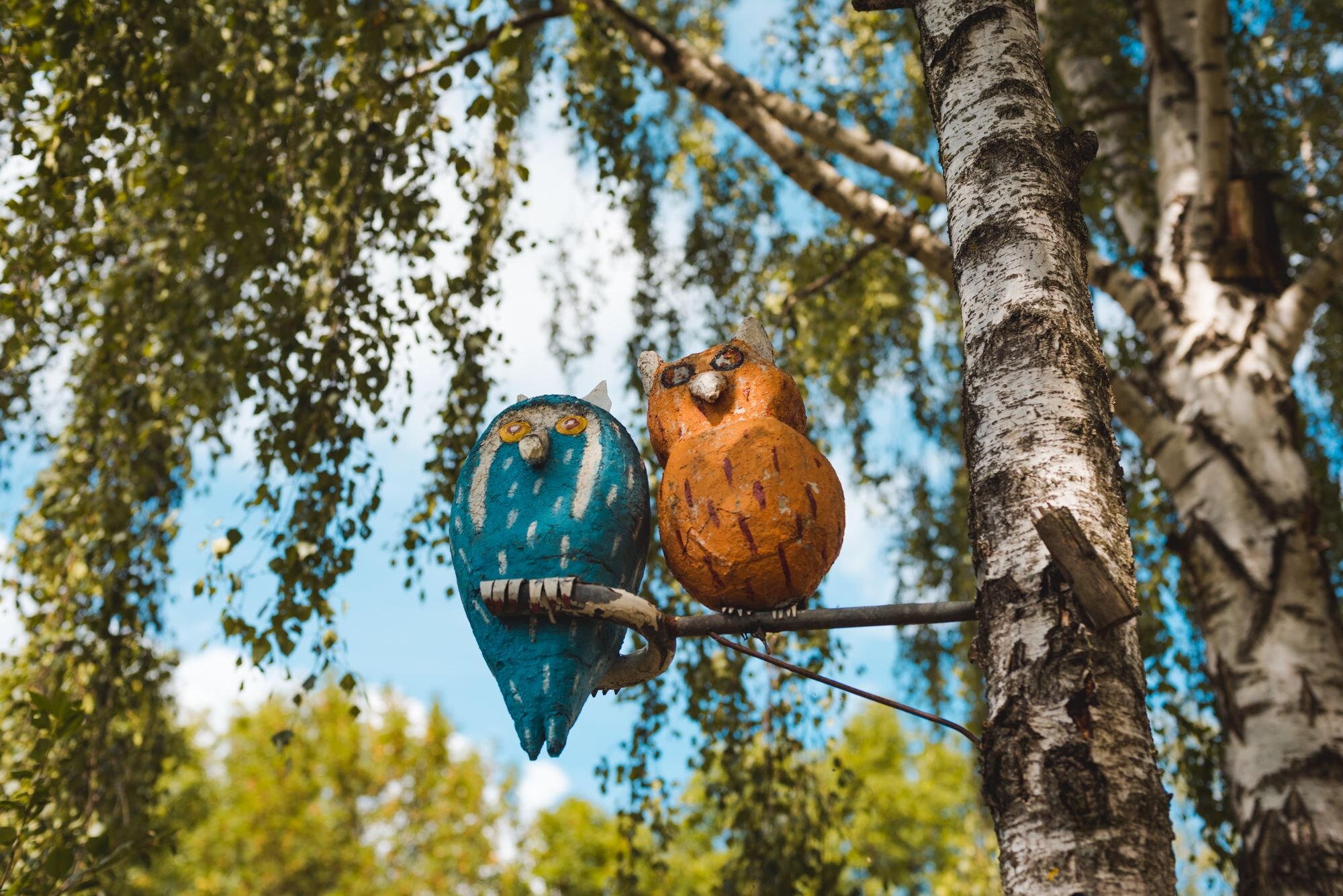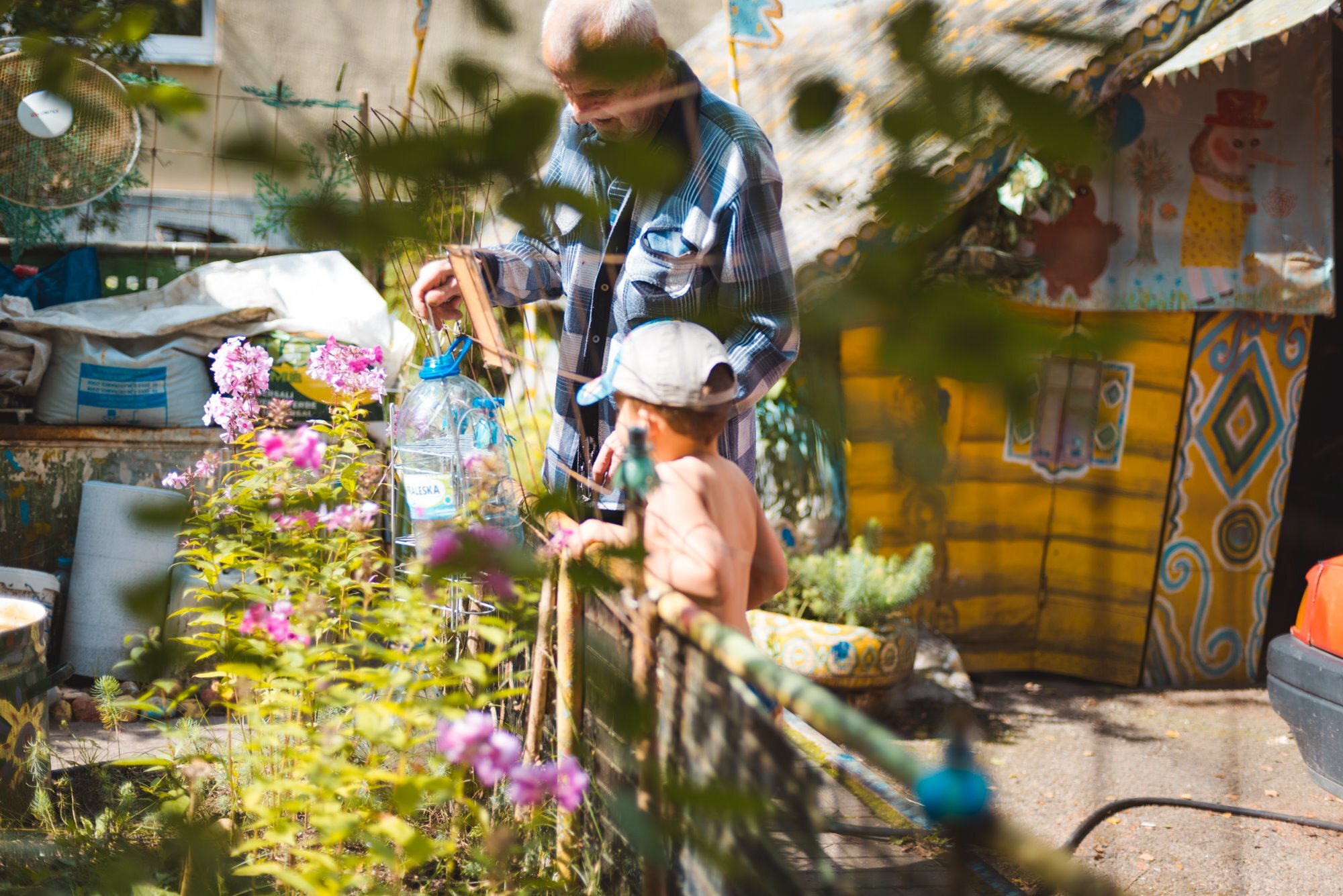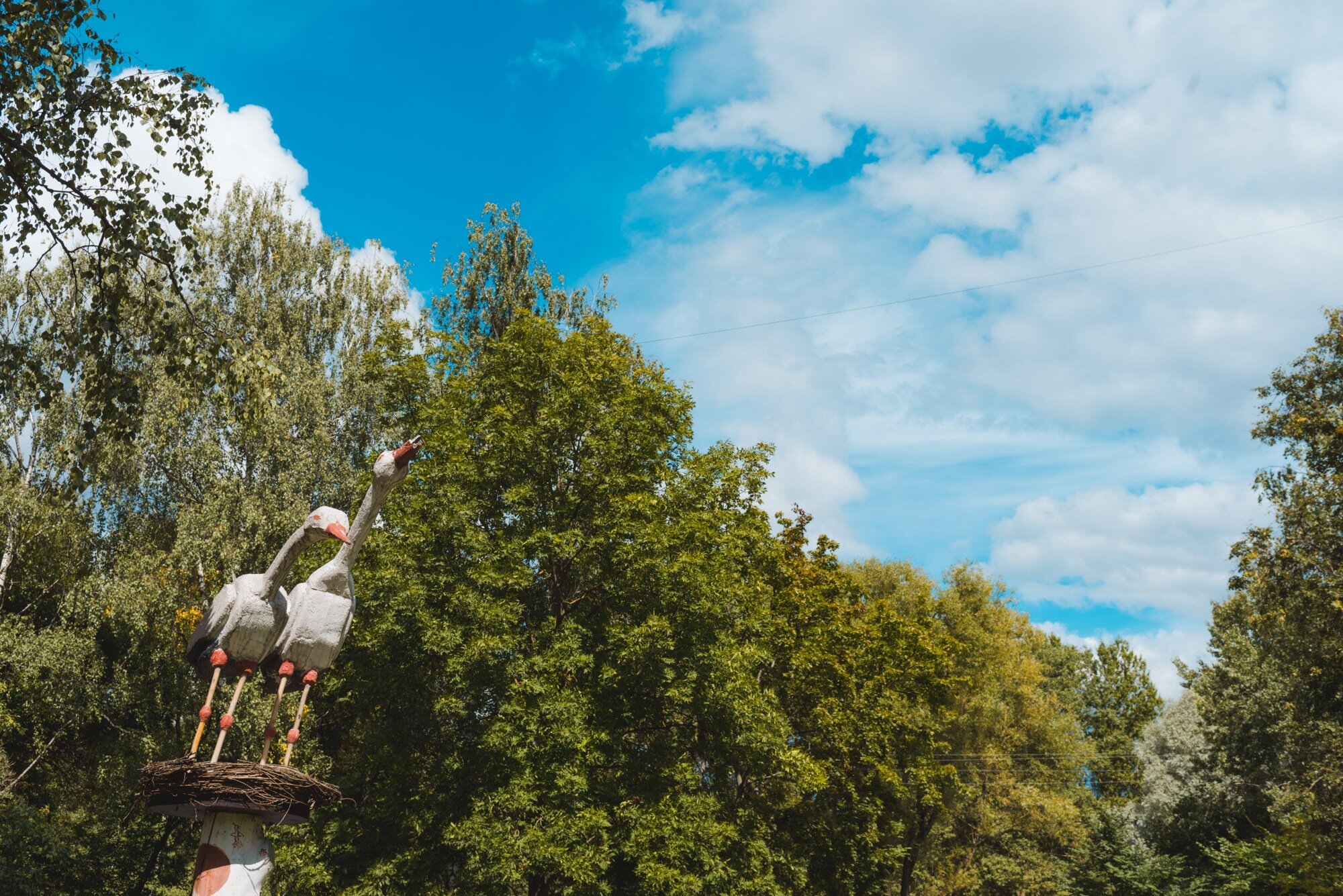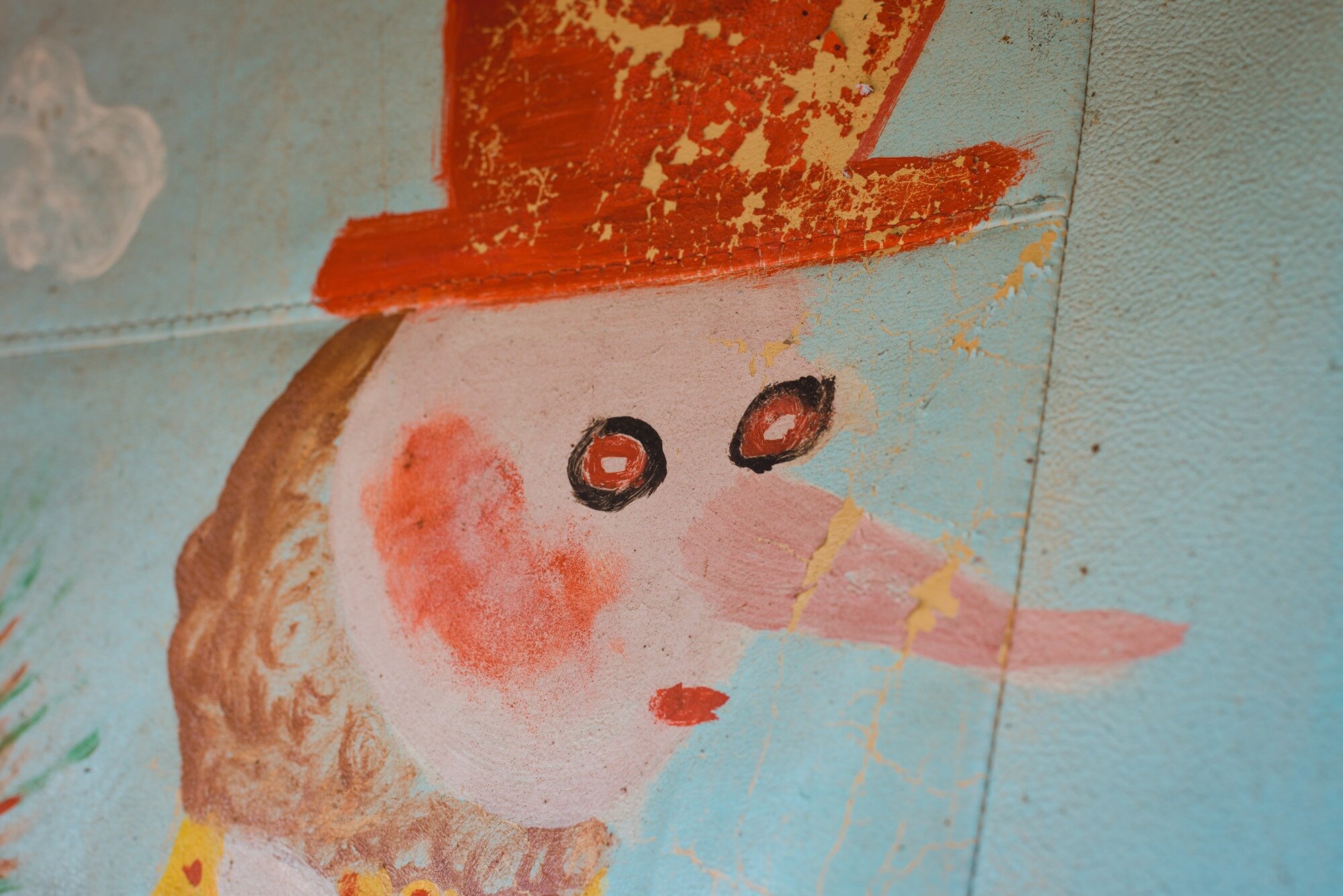Puppet Museum in Kashan
A spiritual retreat for lovers of the weird and wonderful
Kashan is a dusty ancient desert city a couple of hours outside Tehran. The old town is a mud-brown maze of alleyways, wind towers and historical buildings. There’s enough history in Kashan to keep a culture-lover busy for days. But the real reason to come here is the Puppet & Toy Museum Hostel. There’s nothing quite like it anywhere else in the world.
daste shomâ dard nakone
“may your hand not hurt” - a way of thanking someone for a meal or a gift
The museum is located in a fine 19th Century house that once belonged to a poet. Already a good start. And it doubles as a hostel with traditionally-decorated rooms around a sunny courtyard. Even better. It’s run by a sweet team of artists, musicians and assorted bohemian types. The atmosphere nourishes the soul in a way that’s hard to describe. A spiritual retreat for misfits and lovers of the eccentric. The kind of place a modern-day Hemingway could hole up in for weeks to write their new novel. In the late afternoon you can hear the birds enjoying the softening sun. At €6 a night, those weeks could easily run into months.
A typical day starts with a sunrise walk around the old town, watching the shadows grow along the old walls, followed by an excellent breakfast. Guests are a motley mix of backpackers, cultivated Iranians, and families with kids come especially for the puppet show. Folk music and squeaky sounds (just like the U.K.’s Mr Punch) float up from the museum below as the performers rehearse their routine. The museum itself houses a collection of antique puppets from around Kashan and across Iran, as well as old dolls from around the world. It’s amazing to see such a collection in the middle of nowhere. They also run puppet-making workshops and carry out field research into the songs and oral traditions of the surrounding area. The entire place is a work of art. Every corner has a story to tell.
The show itself lasts around 15 minutes. The three performers - two puppeteers behind the curtain and a musician in front - really get the crowd going. Although I couldn’t understand a word, the show reminded me of Guignol and Punch & Judy shows from my childhood, with similar levels of comedy violence. The whole audience, kids and adults alike, clapped along with the call-and-response. It was a joy to witness this quirky blend of innocent fun, poetry, history and exquisite craft. The fact that it’s not on the tourist trail makes it even more worthwhile. You’re guaranteed to bump into interesting people in this place.
Aside from the puppet shows they hold traditional music performances like this Yalda (longest) night (with the Hobby Horse character also found across Europe). This video was sent to me by my friend Khimya, an architect and tile-maker from Tehran who is busy restoring parts of the old bazaar. We spent many hours exploring Kashan together. It’s easy to make friends in Iran.
Car dating in Iran
There’s nothing to do in Bandar Abbas except drive cars on the beach and take selfies
Just across the Persian Gulf from Dubai and Abu Dhabi lies the Iranian industrial port of Bandar Abbas. It’s a world away from its glitzy neighbours, and most tourists know it as the jumping off point for the more relaxed shores of Qeshm and Hormuz. With an evening to kill before my ferry left, I decided to hit the beach. I soon found myself dodging cars, motorbikes and stray dogs – the air filling with noise and fumes, as men and women in the latest Western clothing drove endlessly around. I was watching what could only be described as Car Tinder. Known locally as ‘Door Door’, it involves driving past each other, flirting from behind car windows, stopping and exchanging numbers whenever there’s a match.
There’s a special place for beaches in every culture but Iran takes it up to 11. In a country where the Islamic Regime keeps a close watch on everyday life, with a ban on public flirting and restrictions on social media*, the beach is truly special. It’s a place for young Iranians to dodge the Morality Police, to flirt, to show off their cars, to express themselves. Girls would even remove their hijabs to feel the wind in their hair, some driving from as far as 250km away for their stealthy freedom.
The action really gets going at sunset. That’s when the selfies begin. People everywhere striking poses against a skyline of oil tankers and cargo ships. Selfie culture is big here. Everyone uses VPNs to access Facebook, Google and Western news. (And looking right matters. Nose jobs are a popular status symbol. Everywhere I went I saw fresh nose bandages, not all of them real.)
Here amongst the noise, fumes and dust of the beach, you realise just how expert young Iranians are at finding ways to express themselves and, mainly, to flirt. No matter what restrictions the authorities impose, the youth will always find creative ways around them.
The day I left Iran, protests raged across the country against fuel price hikes. Driving cars on the beach (or anywhere else) had just got a whole lot more expensive. The Regime shut down the entire internet for days. Selfie Culture was put on hold. But something told me, it wouldn’t be for long.
Original Vice piece here.
*Instagram and WhatsApp are allowed in Iran.
Many thanks to Henry Scott for help with the write-up.
Interview with JOAI magazine
Christopher Pugmire busca su identidad en los otros
About a month ago, I was received an email from someone named Adriana Conde, asking if I would kindly submit to an interview about my ongoing identity crisis and how I see myself reflected in others.
Read the interview HERE
Anatoliy's World of Wonders
One man's personal art project - an animal sculpture garden for local kids
Anatoliy, 82 - a retired welder with no formal art training - made his first creature 15 years ago. The kids loved it so he kept on making them - placing them in the garden and in the trees around his home. The garden and trees around his house are filled with owls, doves, storks, foxes, bears, tigers, cats, deer, gazelles, giraffes and assorted Soviet-era cartoon characters. They’re painted in the cheerful pastel colours so typical of Soviet housing projects and parks.
He creates them in his shed from carved polystyrene coated in thick colourful paint. His naive psychedelic folk style could be described as Rousseau-meets-Cheburashka, with a touch of Midsommar. He relies on donations to buy paint and materials. His neighbour, a middle aged woman, sometimes helps with the painting.
I visited Anatoliy’s atelier with my friend Masha Svyatogor, a visual artist based in Minsk. Masha shot a fashion story using Anatoliy’s garden as a backdrop. Anatoliy is a humble and straighforward man. When we met him, he was tinkering with his car but he was happy to stop and chat with us. He seems to be constantly busy with his hands. Anatoliy has become something of a cult figure in the Belarus art world.
Love Letter To Odessa // Дорогая Мама
http://www.instituteartist.com/feature-Everything-is-fine-in-Odessa-Christopher-Pugmire
Known for its exuberant Baroque style, Odessa sits like a half-eaten oligarch’s wedding cake on the Black Sea coast of Ukraine. Ever since the days of Catherine The Great, this city has been a melting pot of characters and cultures. A fragile fever dream of high society and cosmopolitan freedom, rocked repeatedly by wars, pogroms and revolutions.
The dream lives on in Lanzheron. People from all over the ex-Soviet Union flock to the boardwalk to primp and pose. Locals and tourists strut their stuff in a psychedelic carnival of colour and excess. Families in Sunday best. Wasted gopniks in tracksuits. Blondinkas in insane heels. Big sunburned babushkas. Tiny toy dogs. Teenage couples. Ageing athletes. Israeli emigrés. Hare Krishnas. Chinese tourists. Fantasies fuelled by fake champagne, cheap vodka, dried fish and sunflower seeds.
Odessa is an ageing duchess - well past her prime but putting on a brave face under layers of paint. The Odessa selfie is the prize - a fleeting frozen moment of romance and possibilities. This eternal city of dreams and schemes still occupies a special place in the post-Soviet psyche.
Years ago I joined the cast of characters, and every summer I return to faithfully replay my role. The Anglo-French photographer, fake press pass around my neck, spinning tales of access to fashion magazines when caught in the act. Shooting strictly at afternoon’s end, when the sun sets behind the hill and casts a golden light onto the stage. Looking for the perfect pastel postcard to commit to camera.
Today - with the war in Eastern Ukraine, a ravaged economy and the absurd circus of political corruption - the city of dreams is having to dream harder than ever.
Odessa Mama, ya tebya lyublyu.



